




ENTANGLED FUTURES: THE NEXT LEAP IN COMPUTING POWER

EXCLUSIVES

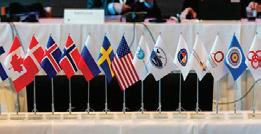


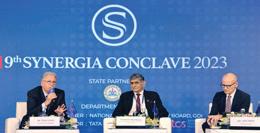
MEDIA ENABLED MARCH EDITION 2024 | MONTHLY EDITION LOOKING BEYOND THE CURVE SYNERGIA THE FINAL FRONTIER? Page - 03 RIAC - SYNERGIA INTERVIEW Page - 25 SURVIVING TECHNOLOGY Page - 29 KYASANUR FOREST DISEASE (KFD) Page - 43 Page - 45 TWO ENDS OF THE SPECTRUM

INSIGHTS is a strategic affairs, foreign policy, science and technology magazine that provides nonpartisan analysis of contemporary issues based on real-time information.
To subscribe,
sambratha@synergiagroup.in ; +91 80 4197 1000

https://www.synergiafoundation.org

Dear Reader:
Greetings from the Synergia Foundation!
Synergia Foundation is determined to make an impactful space for itself in the tech domain of our Cyber City by focusing domestic and international entrepreneurs’ attention (and investments!) here in Bangalore and beyond. In this endeavour, we have organised round tables to facilitate interaction between local start-ups, foreign diplomats and Indian corporate houses. Towards this end, Insight Magazine also has a considerable component of tech-related articles. In fact, the spotlight articles in this issue are on tech subjects in such diverse disciplines as data preservation and quantum computing. We also share insights on possible areas for tech collaboration with Ukraine.
As our readers have been following our coverage of India’s extended neighbourhood with a degree of interest, we commence a comprehensive coverage of West Asia in this issue. Predictably, the country we chose to start this analysis is the Kingdom of Saudi Arabia. Since we cannot ignore the threats to stability that West Asia faces from the ongoing crisis in Gaza, we look at the intelligence failures that led to the debacle of October 7th in Israel and follow it up with a wide-ranging discussion on the “Two Ends of the Spectrum” that mark this conflict between Israel (a tech-powered nation) and Hamas

Sincerely yours

Synergia Foundation endeavours to project the country’s economic interests with our potential allies and partners. Recently, a detailed discussion was held with Russia on Indian interests in the Arctic, which is reproduced in this issue for our readers to comment on. Our Synergia Research team has produced a well-researched article on why India must not be left behind in the race for the Arctic’s riches.
Mr Yuval Noah Harari, a Professor at the Hebrew University of Jerusalem and the author of the global bestseller Sapiens, needs no introduction. Synergia Foundation was fortunate to have him address the 9th Synergia Conclave on the tricky subject of ‘Surviving Technology,’ which we include in this issue for our readers to enjoy.
We hope our esteemed readers will continue supporting us as we strive to further evidence-based research on strategic issues with global resonance.

Maj. Gen. Ajay Sah
Information Officer (the weaker side but equally adept in harnessing tech). Under the overhang of the Gaza conflict, we do a detailed analysis of Risk Assessment and Intelligence Services by an eminent expert in this field. In our global scan, we look at Rwanda, also referred to in some quarters as the ‘African Israel!’

EDITORIAL
SCAN THE QR CODE TO SUBSCRIBE SCAN FOR FEEDBACK
Chief

FEATURED
SPOTLIGHT STORY
QUANTUM: THE FINAL FRONTIER?
THE SPECTRE OF DIGITAL DARKNESS
INDIA’S EXTENDED NEIGHBOURHOOD
AN EYE ON WEST ASIA
SECURITY
EMERGING
OCTOBER
INDO-RUSSIA
RIAC - SYNERGIA INTERVIEW
TECHNOLOGY
SURVIVING TECHNOLOGY
AI SOLVING PROTEIN STRUCTURES?
GLOBAL SCAN
RWANDA – EAST AFRICAN ‘SMART POWER’
ECONOMICS
A FUTURE ECONOMIC POWERHOUSE
HEALTH ANALYSIS
KYASANUR FOREST DISEASE (KFD)








TWO ENDS OF THE SPECTRUM



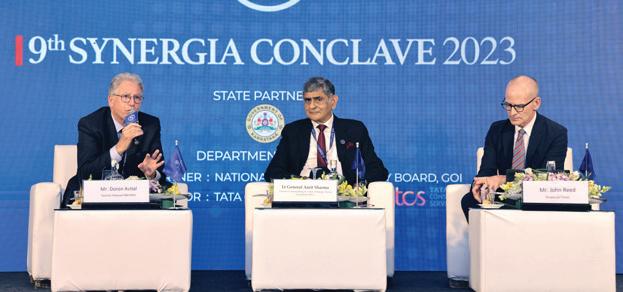
GLOBAL RISKS & INTELLIGENCE
AN ALLIANCE ANCHORED ON TECH
WEST ASIA’S RISING POLE
7TH: AN ANALYSIS 03 06 10 18 25 29 32 35 39 43 45 49 14 21 06 03 21 29 18 32 25 10 43 45 35 39 MARCH EDITION 2024

THE FINAL FRONTIER?


Quantum Computing represents a paradigmatic shift in information processing rooted in the profound principles of quantum mechanics.

Ritika Simon is a Strategic Policy Adviser in Synergia Foundation. She has Mastered from LSE in Economics & Risk and Society.
Flip a coin. Heads or tails, right? However, while the coin is in mid-air, it exists in a state of uncertainty, representing a probability of both outcomes. This notion of uncertainty forms the fundamental basis of quantum computing.
Delving into the expansive and intricate field of computer science leads us to encounter quantum computing—an intriguing domain steadily reshaping our computational frontiers.
Celebrated as the harbinger of a new era in computing, this captivating area, shrouded in mystery yet brimming with potential, promises groundbreaking advancements.
Emerging from the convergence of computer science and quantum physics, quantum computing transcends mere technological innovation. It represents a paradigmatic shift, introducing a novel approach to information processing rooted in quantum mechanics’ enigmatic yet profound principles.
Nonetheless, the field remains in its early stages, encountering significant technical hurdles such as qubit coherence maintenance and error correction. Despite these challenges, the rapid advancements and increasing interest in quantum computing underscore its capacity to redefine the boundaries of computational capabilities in the foreseeable future.
With quantum computing, we are not merely incrementally enhancing our computational capabilities; we are ushering in a new era of data processing and problem-solving. In this realm, what appears impossible today may become commonplace in the future.
THE BASICS
Quantum computing is not merely an evolution of traditional computing; rather, it constitutes an entirely separate domain with its own set of rules and remarkable capabilities. It leverages the principles of quantum mechanics to process and manipulate information in fundamentally novel ways.
While classical computers rely on bits as their fundamental unit of data, operating within the binary language of 0s and 1s, quantum computing introduces a completely novel element—the qubit (short for quantum bit). Unlike classical bits, qubits operate on the principle of superposition, enabling them to exist in a state that is a combination of both 0’s and 1’s simultaneously. This heightened computational power holds the potential to revolutionise various domains, including cryptography, drug discovery, optimisation, and artificial intelligence.
A QUANTUM LEAP!
Consider the significant enhancement in processing capabilities that could be achieved if a single unit of data could simultaneously represent multiple states—
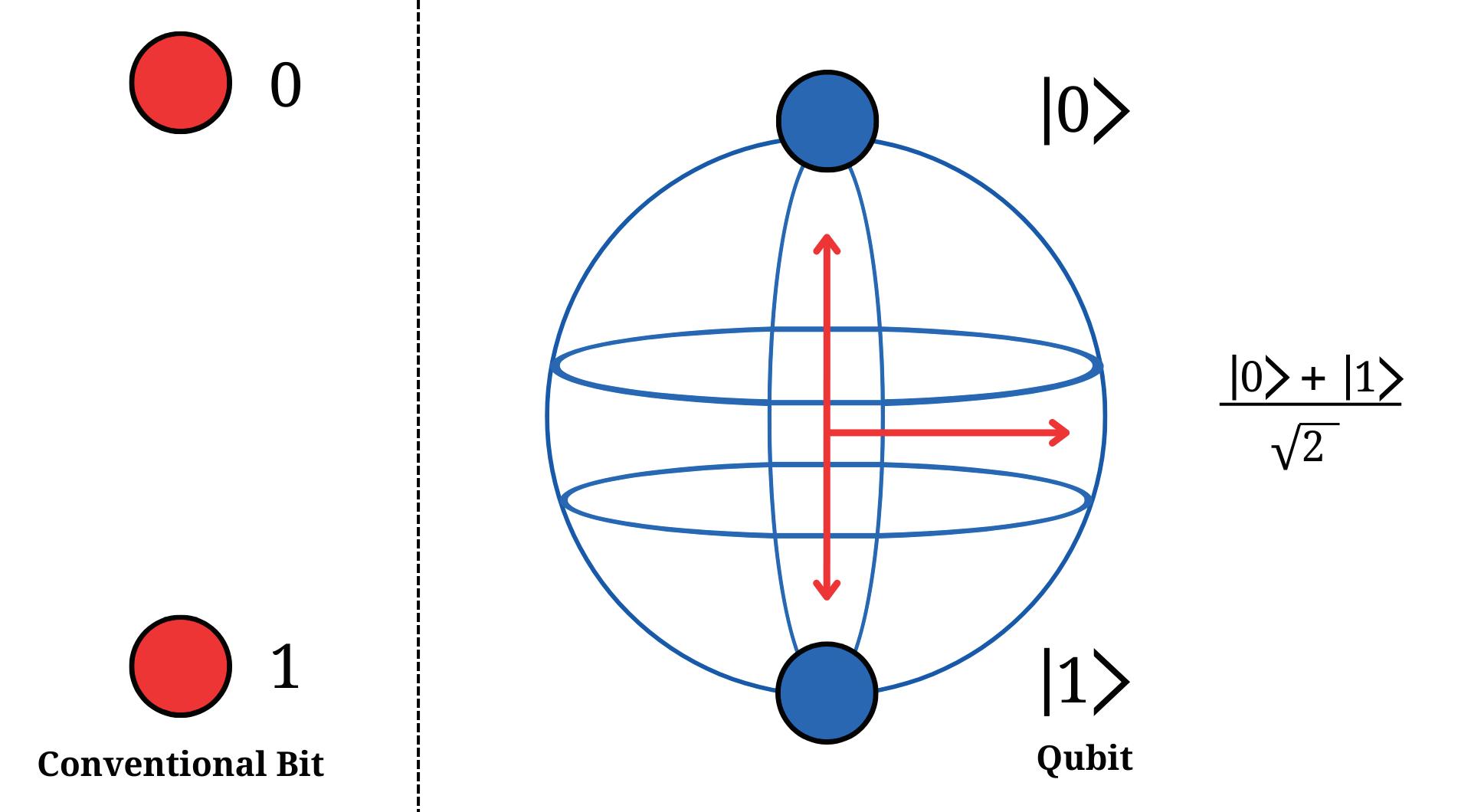
this is precisely the unparalleled power that quantum computing offers.
Furthermore, quantum computing showcases the entanglement phenomenon inherent in quantum mechanics, further augmenting its marvel.
This feature enables qubits to be interconnected regardless of their physical separation, fostering an intricately integrated system. Despite the distance between entangled qubits, the informational state of one can swiftly influence the state of the other.
This results in a remarkable amplification of computational power and speed, potentially unlocking solutions to challenges that traditional computers currently struggle to address. This radical departure from the binary, deterministic realm of classical computing paves the way for an entirely new spectrum of potential applications.
Consider a maze featuring multiple potential routes to the finish line. A classical computer would approach this by systematically exploring each path individually until it identifies the exit. Conversely, a quantum computer possesses the ability to simultaneously explore all possible paths.
This critical differentiation underscores its extraordinary problem-solving abilities, allowing it to efficiently navigate complex tasks that would significantly challenge classical computers.
With quantum computing, we are not merely incrementally enhancing our computational capabilities; we are ushering in a new era of data processing and problem-solving. In this realm, what appears impossible today may become commonplace in the future.
THE BENEFITS
Industry and Modelling: In diverse industries spanning from logistics to aerospace, quantum com-
puters hold the potential to optimise intricate financial models and supply chains with unparalleled precision. These advancements offer the prospect of cost reduction, operational streamlining, and the enhancement of economic growth.
Quantum AI: Quantum computers offer the potential to employ advanced algorithms that could revolutionise machine learning applications across various industries, ranging from pharmaceuticals to automotive. Specifically, quantum computers could expedite the development of self-driving vehicles.
Companies such as Ford, GM, Volkswagen, and numerous mobility startups are leveraging complex neural networks to analyse video and image data, aiming to use artificial intelligence to enable vehicles to make critical driving decisions. The capability of quantum computers to conduct multiple intricate calculations with numerous variables simultaneously enables quicker training of such AI systems.
Biomedical: The healthcare industry stands on the brink of transformation with the advent of quantum computing. Processes like drug discovery, typically plagued by trial and error, could see substantial improvements in efficiency.
Today’s computers face significant challenges in accurately simulating complex systems due to the intricate interactions among atoms. However, experts anticipate that quantum computers possess sufficient computational power to potentially model even the most intricate molecules within the human body.
This capability can accelerate the development of new drugs and groundbreaking therapeutic interventions. As an illustration, quantum dots have potential applications as fluorescent probes in the fields of bioimaging and biosensing for cellular and tissue analysis.
Agriculture: In the agricultural sector, quantum materials offer opportunities to improve productivi-
04 THE FINAL FRONTIER?

ty, quality, and security through applications like biosensing, bioimaging, and nano-delivery. For instance, quantum dots serve as biosensors capable of detecting pathogens and toxins in crops and livestock, thereby enhancing agricultural practices.
THE PERILS
Technical Obstacles: Technical challenges abound in quantum computing due to the inherent volatility of qubits. Unlike classical bits, qubits possess the unique ability to represent multiple states simultaneously and interact with one another. Consequently, managing these interactions poses significant complexity, leading to potential data loss or alteration and inaccuracies in computation results.
High Sensitivity: Heightened sensitivity poses a prevalent challenge for researchers in quantum computing. Quantum decoherence, induced by factors such as heat and light, is a common issue encountered in isolation. Exposure to these conditions leads to the loss of quantum features, such as entanglement, in qubits, ultimately resulting in the loss of data contained within them.
THE WAY FORWARD
An Enhancement in Investment: Realising the full potential of quantum technology necessitates significant investments in research and development, infrastructure, and human capital.
India has initiated progress in this realm through the launch of the National Quantum Mission, backed by a budget of Rs. 6000 crores. Nonetheless, additional public and private funding is imperative to bolster the advancement of quantum startups, service providers, and academic institutions.
Setting a Regulatory Framework in place: The advent of quantum technology brings forth ethical, legal, and social considerations that warrant attention prior to its widespread adoption.
For instance, quantum sensing capabilities may encroach upon privacy rights, while the deployment of quantum weapons could yield catastrophic consequences.
Hence, it is advisable to formulate a regulatory framework for quantum technology that harmonises innovation with security concerns.
Collaboration Among Stakeholders: Enhanced comprehension of Quantum technology necessitates effective collaboration and cooperation among diverse stakeholders, including government agencies, industry entities, and academic institutions.
Such partnerships can facilitate knowledge exchange, spur innovation, and establish standardised practices across various domains and applications of quantum technology.
Moreover, active engagement in global initiatives and networks related to quantum technology can position India as a key contributor on the global stage.
In conclusion, the “Quantum Computing Promise” provides an intriguing insight into the future of computation, where traditional boundaries are transcended.
Although the road ahead may present challenges, the potential of quantum computing encourages us to venture into uncharted territories and unleash the complete capabilities of information processing. Positioned at the forefront of this quantum revolution, the horizon of computing appears remarkably promising.
05 THE FINAL FRONTIER?
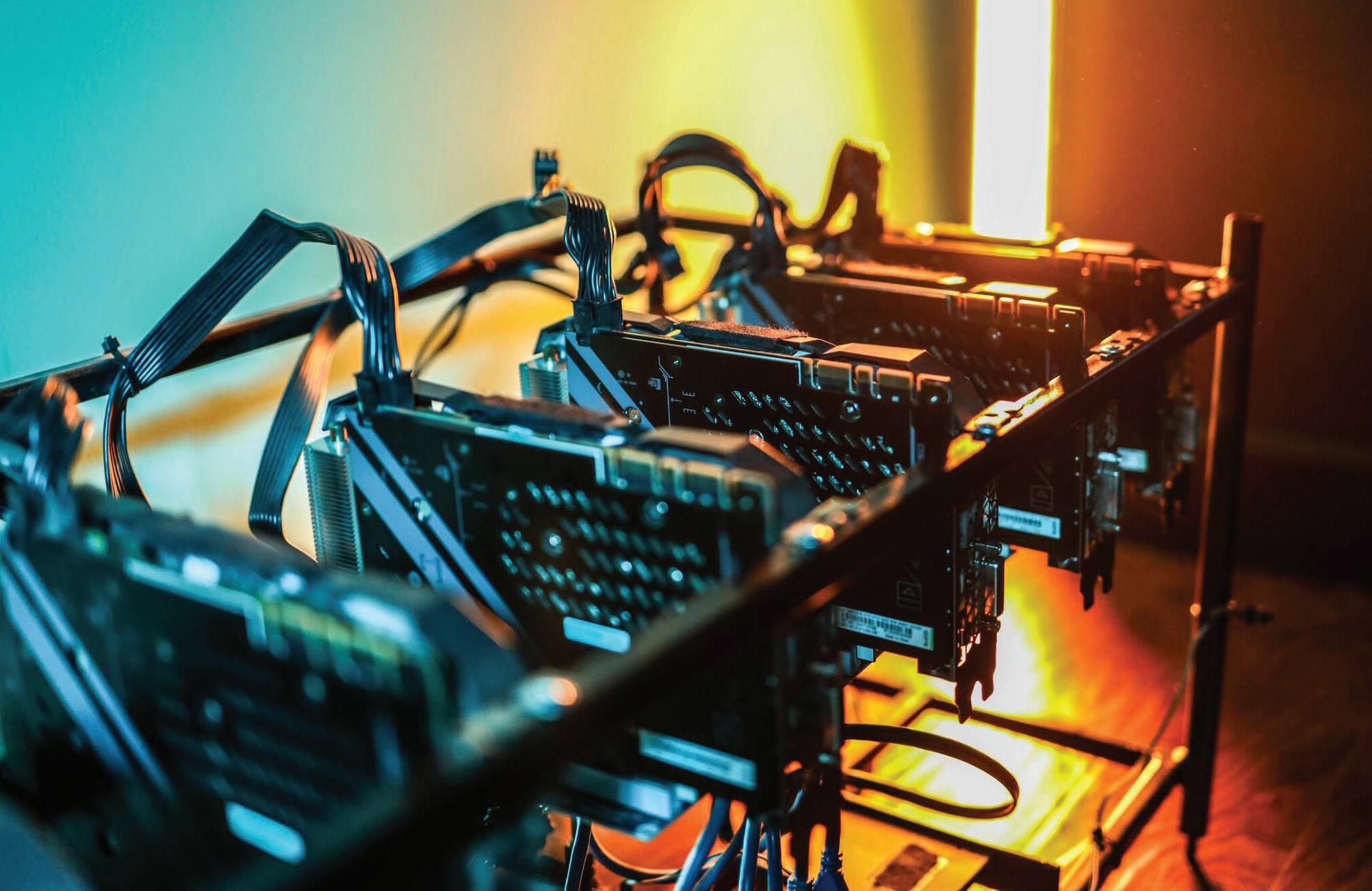
THE SPECTRE OF DIGITAL DARKNESS


Technological obsolescence caused digital data loss may lead to giving up for posterity irreplaceable knowledge and history.

TDiya Celine Simon Research Associate in Synergia Foundation with a Bachelor’s in Media and Communications, English Literature and Psychology.
he consequences of digital darkness go beyond simple data loss. At its core, it calls into question the basic underpinning of digital information preservation, posing the possibility of erasing substantial chunks of our digital heritage.
Loss of essential information, including scientific research data and cultural artefacts, can impede progress across all areas, and we need to focus on preservation now more than ever.
UNDERSTANDING DIGITAL DARKNESS
The term “Digital Darkness” was first used in the context of digital preservation at an International Federation of Library Associations and Institutions (IFLA) conference in September 1997 and subsequently in 1998 at the Time and Bits conference.
However, Vint Cerf, Marconi prize winner and a “father of the internet”, more recently spoke about why people should be more concerned about losing their digital data. The term “Digital Darkness” refers to a dystopian reality where humans lose blocks of digital data in obsolete systems in the race for newer technologies.
Take a simple example like iPhones; Apple has fitted its newest iPhone models with the Type-C cable
The term “Digital Darkness” refers to a dystopian reality where humans lose blocks of digital data in obsolete systems in the race for newer technologies.
port, but all previous models still use the lightning cable ports to power them. Suppose in twenty years, lightning cables are non-existent, and there is no way to charge the device- any data on the phone not backed on the Cloud will be lost.
Digital data can also be lost through cyber and ransomware attacks or natural calamities. Flooding, earthquakes, and fires can all cause tangible damage to data storage systems like servers, hard drives, and backup media. Power outages and infrastructure damage during such storms can impede data access and result in data loss.
Furthermore, natural disasters can disrupt data backup systems, making recovery difficult. Cyber attacks targeted at healthcare, research and development, academia, military, government, etc, not only put lives at risk but also mindlessly obliterate data that is pivotal to our understanding of the present and future generations of their history.
The bottom line is when the future relies on its references to the past, and digital darkness is a very real possibility, our technologies and advancements may struggle to serve their true purpose without data that justifies them in the long run. The modus operandi to
SPOTLIGHT STORY

avoid handicapping future generations from accessing indispensable data for progress is to prepare a resilient global strategy for a self-funded archive architecture.
DATA PRESERVATION IS IMPORTANT
Hieroglyphics, the Ancient Egyptian system of writing marked by its pictorial representation of elements, has played a crucial role in preserving the history, culture, and religious beliefs of Ancient Egypt.
What if Hieroglyphics did not survive the test of progress and time? We would have a substantial gap in our historical knowledge and cultural heritage about the civilisation. Art, literature, architecture, language and religious studies would be affected.
It would also affect what we know in mathematics, specifically geometry, science and medical practices since Ancient Egyptian contributions in these fields have shaped our society to date. It would also affect our political views and governance systems.
The sophistication of Ancient Egyptian societies depicted through hieroglyphics describes several hierarchical systems, legal principles and concepts of justice and order. Can we think of a present reality where documents of our experiences, findings, thoughts, feelings and work are inaccessible? Even on a personal level, losing wedding pictures or home videos is heartbreaking.
And what about personal identification documents or digital assets? What about a macro level of data preservation, like historical, cultural, and scientific records? Data preservation is critical to maintaining the longterm accessibility and usability of information.
It facilitates studies, teaching, development and decision-making. Cloud storage, immortal, GiytHub, the Computer History Museum, and Google Culture and Arts are some existing internet archive examples but
they need more structure and resilience. Vint Cerf emphasises the importance of ensuring digital data considered valuable or essential is preserved and remains accessible despite technological advancement.
Without efficient preservation, digital data may become inaccessible, resulting in a major loss of knowledge and history because of technological obsolescence or physical degradation.
CONSEQUENCES OF DATA LOSS
Data loss and digital darkness have a tremendous impact on individuals, organisations, and governments because of erasing historical documents, cultural legacy, and scientific information. They say those who do not remember history are bound to repeat it.
There are fears of losing huge amounts of digital data from the 21st century during the technological growth race, meaning that future generations risk having minimal or incomprehensible data to go by future studies and expeditions. In a data-driven world, data loss has cascading impacts on productivity, growth, understanding of the world and all the dimensions associated with anthropogenic activity.
For individuals, it can result in the loss of personal memories, digital assets, and identification information. It can influence personal history, identity, and the ability to communicate or pass on information to future generations, resulting in personal “data voids” in which valuable pieces of one’s digital existence are irretrievably lost.
Governments risk losing public records, legal documents, and essential infrastructure data, which impede policymaking, governance, and public services. Overall, the repercussions include re

07 THE SPECTRE OF DIGITAL DARKNESS
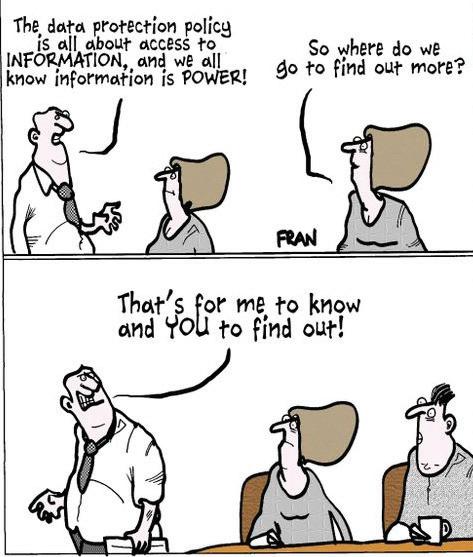
duced creativity, lost knowledge, and diminished trust in digital systems.On an organisational level, data loss inevitably leads to operational disruptions, financial losses, damaged reputations, and sometimes company dissolution. Ransomware cyber crimes, which have increased in frequency by 41%, cause enormous financial harm, with organisations losing an average of USD 4.54 million.
Destructive attacks have also increased in frequency and expense, totalling USD 5.12 million, or nearly USD 430,000 more than the previous year. Data loss costs, including regulatory fines, are especially high in entities like healthcare and financial services, where strict security standards must be followed.
Noncompliance with legislation such as HIPAA could bring punitive consequences. In addition, many healthcare institutions need to catch up in updating their systems with high-standard firewalls and defence mechanisms.
According to the University of Texas, 94% of organisations that suffer catastrophic data loss fail to recover. An astonishing 43% never reopened for business, while 51% discontinued operations after 24 months. Another study discovered that 93% of organisations file for bankruptcy within a year of data loss continuing more than ten days.
ADVANTAGES OF DATA PRESERVATION
Given the fears of digital darkness, data preservation provides significant benefits by ensuring the longevity and accessibility of vital digital content. It prevents the loss of indispensable historical, cultural, and scientific information that might otherwise be inaccessible owing to technological obsolescence, cyber crimes or natural
disasters. It promotes ongoing research, education, and informed decision-making across generations by keeping data up-to-date and in legible formats. Data preservation also improves organisational resilience and knowledge management by protecting against data loss due to technology failures or disasters.
In a world where data is monetised and is a hefty source of revenue, data preservation techniques can also help organisations avoid intellectual property theft cases, regulatory breaches in service, and losses or compromise of brand assets.
IBM research found that data breach expenses totalled $4.35 million in 2022, up 3% from 2021. They help uphold public trust and security in data-holding organisations because cyber crimes have become more critical, making data more vulnerable in the face of notorious online behaviour.
KEY MEASURES OF PRESERVATION
Preserving digital assets is more than just ‘good’ corporate practice; these assets may drive future marketing initiatives and allow organisations to reap the benefits of their previous investments and efforts.
As a result, archiving solutions are becoming increasingly favoured, in addition to meeting regulatory record-keeping needs.
Digital or website archiving is the act of recording and archiving a company’s digital material, often housed in a platform from which the data may be retrieved on demand.
Vint Cerf speaks about the development of an archive architecture that allows for interoperability between many archives.
If one archive is lost, another archive can consume all of its data to maintain accessibility. Creating this archive architecture requires knowing the location of information, how it can be read, who has access to it and the possibility of information sharing.
The Open Archival Information System (OAIS) environment is an existing framework structured to facilitate interaction between three main entities identified in sustainable archival architecture- the producer, the management and the consumer of the archive.
The first entity is the producer, who supplies information to the archive ecosystem. The second is the management, which sets the broad policies around which the archive stores, supplies and categories data, and the consumer uses the data on the archive.
The framework prioritises understanding the community the archive is prepared for, adding additional representations and symbols to make information more explanatory. This way, the data stored is meaningful and sustainable. The framework is designed to fight digital darkness and make digital information in the long run.
08 THE SPECTRE OF DIGITAL DARKNESS
DATA LOSS PREVENTION
NETWORK
• Email
• Web
• FTP
• IM
STORAGE
• File server
• Databases
• Sharepoint
• Web servers

The model has four components; ingesting and preparing information for storage, archival storage and retrieval of information, data management and coordinating information within the archive, and day-to-day administrative operations.
The Consultation Committee on Space Data Systems maintains and develops standards for archiving all open-access data from space explorations.
However, addressing obsolete storage formats, accessibility, effectivity storage management and planning for the obsolescence of software, handware and operating systems are critical measures.
The MOSAiC Data Project is another initiative that provides free access to data collected from the MOSAiC expedition, which is available to everyone worldwide. The project adheres to the FAIR data publication rules, ensuring datasets are findable, accessible, interoperable, and reusable.
The initiative encourages collaboration and proper citation when utilizing MOSAiC datasets for publications or research, with specific guidelines outlined for acknowledgement and manuscript support. The data can be explored through various repositories and visualization tools, and unprocessed or primary datasets are also available for more detailed analysis.
RECOMMENDATIONS
Migrating strategies for at-risk formats to preservation-friendly ones, accessibility across devices, managing digital records efficiency and monitoring technological developments are surefire ways to balance data preservation with progress. While it is ideal to have a self-sufficient data archival architecture, longterm maintenance of older devices adds to the cost factor.
CLOUD & MOBILE
• Office 365
• iOS
• Android
CLOUD & MOBILE
• USB
• Hard Drives
• Removable storages
• Network shares
• Cloud & Web apps
Data preservation needs to be understood as a globally-beneficial multifaceted effort and libraries (public and private), universities, museums etc, will willingly volunteer to provide their infrastructure for archives for a fee.
●Data is a source of revenue in this generation and over time, a means of finding this monetisation to fund the architecture will be ideal.
A combination of private, public and charitable support for the effort will give the archive a robust backup system to rely on.
There needs to be a free flow of international content for data archiving to thrive, however, there is a tendency for nation-states to localise and withhold regional data under national interests.
It is an understandable behaviour but unsustainable in the long run. Developing a routine of declassifying critical data after some time can help the archive system achieve data accuracy while catering to national interests.
Enhancing cyber security measures, developing robust backup plans and refurbishing the recovery systems are some strategies for data preservation.
It is also important to attain international cooperation to establish global standards for digital preservation because IPR regulations will need to be accounted for throughout the archival process.
●The most important step will be to develop public awareness and incorporate the importance of preserving data within the education system. What we teach is what we imbibe, and if we only stress progress, then we neglect the importance of preserving and accessing the steps taken towards it.
09 THE SPECTRE OF DIGITAL DARKNESS
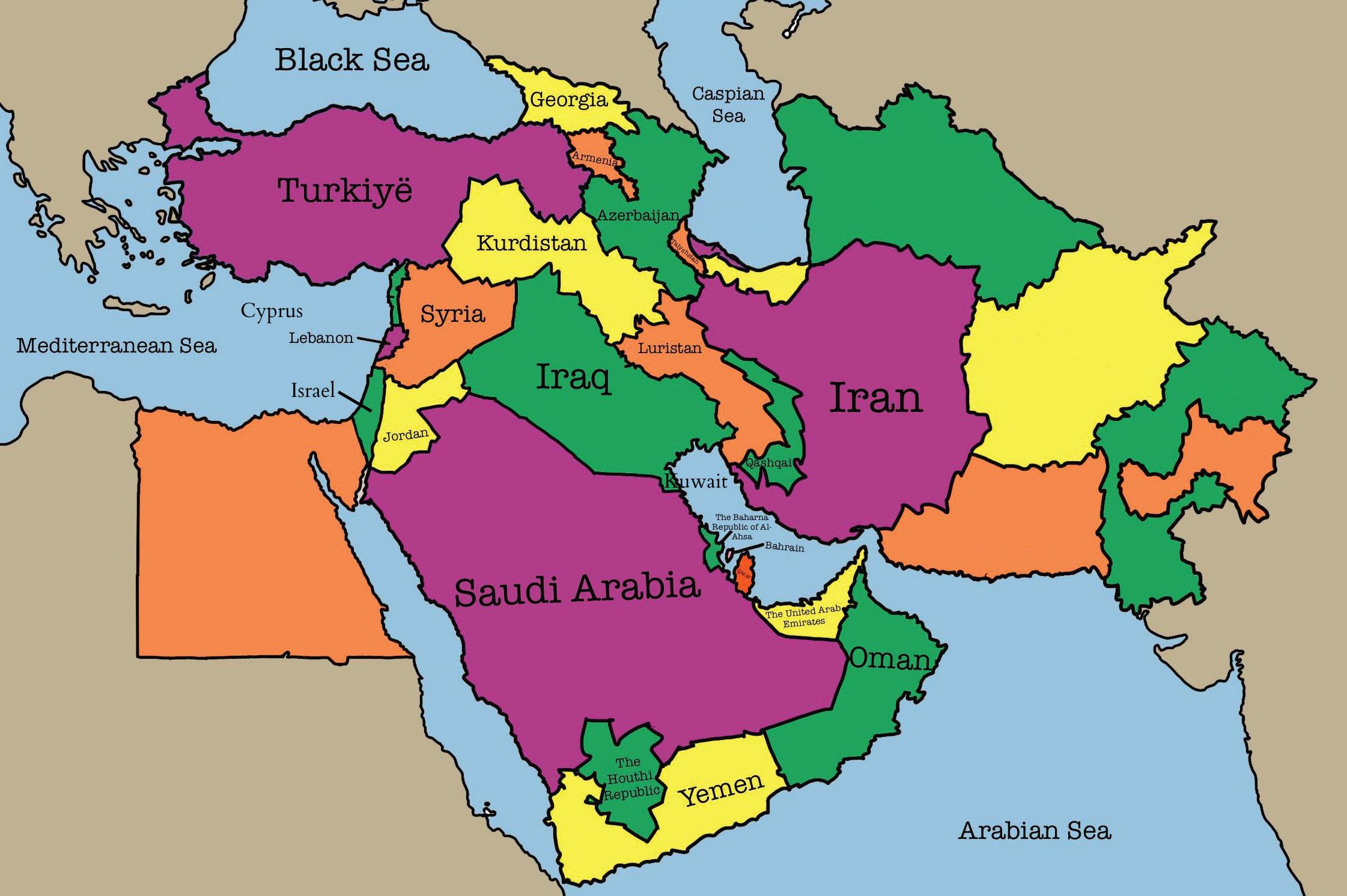
AN EYE ON WEST ASIA


The current developments in West Asia require adaptive strategies and collaborative approaches.

Lt Gen G A V Reddy AVSM, SC, VSM (Retd) is the former Deputy Chief of Integrated Defense Staff, DG-DIA and Strategic Advisor at Synergia Foundation.
The current geopolitical context of West Asia, commonly also referred to as the Middle East, is characterised by complexity, change and emerging dynamics. Traditional power structures are evolving, and new alliances are forming.
The West Asia’s geopolitical landscape is bracing with emerging regional blocs. The Abraham Accords had the potential for forming a “warm peace” between Israel, UAE, and other important West Asian stakeholders, enabling the Indian outreach to seek deeper economic and security integration.
There is a shift in power balance wherein Turkey, Iran and Pakistan act independently and assertively, sometimes with the help of outside powers like Russia and China. The added factor is the perception of reduced U.S. influence in West Asia, which is no longer considered the sole arbiter of the region, and its allies are increasingly looking to build relationships with various external partners.
STRATEGIC RELEVANCE
At the crossroads of three continents, the West Asian region is a critical transit point for trade and commerce, linking Europe, Asia and Africa. This strategic location also makes it a significant player in global maritime transportation and logistics. The other factors
India needs to rework and develop a new West Asia-centric strategy to deal with the region, which must be non-transactional. India’s relations with Arab states and Israel have warmed significantly in recent years, and the conflicts may require India to perform a balancing act between these partners.
attributing to the strategic relevance of the region are enumerated in succeeding paragraphs.
Global Competition: Major powers like the U.S., Russia, China, and the EU hold regional interests, seeking influence and resource access. This competition intensifies regional dynamics and creates potential for proxy conflicts and alliances.
Rise of Regional Powers: Regional powers like Iran, Saudi Arabia, and Turkey, with their ambitions and agendas, add another layer of complexity to the geopolitical landscape. Their actions and interactions can significantly impact regional and global stability.
Rich Natural Resources: The West Asian region is home to the world’s largest oil and natural gas reserves, accounting for about 60 per cent of the world’s proven oil reserves and 45 per cent of the world’s natural gas reserves.
This vast resource wealth gives the region significant economic power and influence on the global
INDIA’S EXTENDED NEIGHBOURHOOD

energy market. Energy resources make global energy security crucial and influence economic and political dynamics. Rising energy demands further amplify its strategic importance.
Infrastructure: The region is investing heavily in infrastructure development, including transportation, communication, tourism and energy.
This investment is improving the region’s connectivity and competitiveness, making it a more attractive destination for foreign investment.
Religious Significance: Home to major religious sites for Islam, Christianity, and Judaism, the region holds immense religious significance for billions worldwide. Any instability or conflict here can have deep religious and cultural implications, potentially triggering wider tensions.
Climate Change adds another dimension to the region’s strategic relevance, as resource scarcity and environmental challenges can worsen instability and conflict.
Demographic Changes in the West Asian region are rapid, with a young and growing population, which brings both opportunities and challenges for governance, economic development, and social stability. The region has over 60 per cent of the population under 30.
This large and youthful population represents a significant human resource potential, which can drive economic growth and innovation if properly harnessed.
The young entrepreneurs are driving innovation and creating new businesses. This entrepreneurial spirit is fuelled by a desire for economic opportunity and a willingness to take risks. The political leadership in
many of these rising West Asian nations reflects this youthful exuberance.
Political Instability: Ongoing conflicts, civil wars, and political rivalries within the region have created an environment of uncertainty and potential flashpoints. These instabilities are impacting global security and fueling extremism, demanding international intervention.
REGIONAL HOT SPOTS
These conflicts have significant geopolitical impacts and involve regional and international powers, contributing to widespread instability and violence in the region.
Syria: Multiple internal conflicts involving various armed groups, including the Islamic State (ISIS), Hayat Tahrir al-Sham, and the Kurdish-dominated Syrian Democratic Forces (SDF).
Yemen: A complex civil war involving the internationally recognised government, the Houthi rebels, and external powers such as Saudi Arabia and Iran.
Libya: An ongoing civil war between factions vying for control of the country, with external intervention from regional powers.
Turkey: Continued military operations in northern Iraq and northern Syria, often in response to Kurdish separatist activities
Iraq: Internal conflicts related to ethnic and sectarian divisions and external influences.
Israel and Palestine: Longstanding conflict over land claims and self-determination, with recent tensions surrounding Jerusalem and Gaza.
11 AN EYE ON WEST ASIA
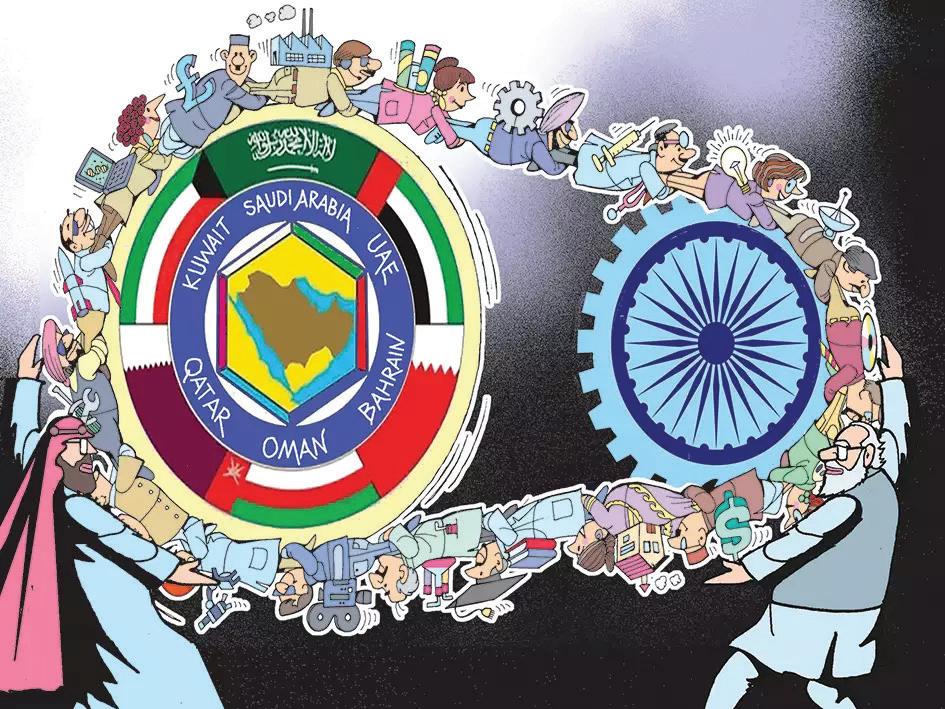
Kurds: Insurgencies and struggles for autonomy in both Iraq and Syria, led primarily by the Kurdish Workers Party (PKK) and affiliated groups.
WHAT’S SPURRING THESE CONFLICTS?
Conflicts in the region are multifaceted and interconnected. West Asia is clearly a tumultuous region, and the origins of nearly all the conflicts can be linked to three elements- water, oil and religion. However, historical animosities, ethnic and cultural differences, and external meddling play a significant role.
Water: Water issues have caused environmental and monetary concerns in the Middle East. In Jordan, the cost of water has increased by 30 per cent in the past ten years.
The water dilemma is a central cause of quarrels among countries. At the current consumption rate, the Middle East predicts that the United Emirates alone will deplete its water resources in less than 50 years.
Oil: Oil is the life flow of many of the important countries of the region, bringing the populace to unimaginable levels of prosperity and well-being in nations that are carefully nurturing their oil wealth. Since 1973, oil exporters have learned to harness the market forces for energy to their advantage and to influence geopolitics.
The control of oil has helped to preserve security and power in the Middle East for decades. Dominance over this non-renewable resource leads to interesting regional power dynamics and competition.
Religion: The Middle East is one of the most religiously diverse regions in the world, besides being home to holy sites for the three main Abrahamic religions — Christianity, Islam and Judaism. This region houses religions including Zoroastrianism, the Druze
religion, Buddhism, Yaziti, Samaritanism and the Baha’i faith, among many others. This medley of beliefs can lead to differences in opinion and conflict, often leading to religious disputes in the region.
Historical events such as the 9/11 attacks, the Iraq War, and the Arab Spring uprisings led to the fall of long-established Arab regimes.
Ethnic and cultural differences, competition for water and oil, and religious disputes have been significant factors contributing to the conflicts in the region.
Conflict between Israelis and Palestinians, including rival claims to the area, borders, the status of Jerusalem, refugees, and settlement activities, is also a key source of conflict in the Middle East.
External powers and interests related to oil and geostrategic considerations have further complicated the region’s dynamics.
INDIA’S RELATIONSHIP WITH WEST ASIA
The relationship has evolved significantly, transitioning from a period of ideological alignment to a multifaceted partnership centred on economics, security, culture and diplomacy.
It initially focused on solidarity with the Arab World, especially during the decolonisation era and the nonaligned movement. During the Cold War, India maintained a balanced stance, avoiding alignments with the Soviet Union or the United States, instead focusing on developing friendly relations with all West Asian countries.
From the late 20th century, India’s economic ties with West Asia grew rapidly, driven by increased trade and investments. In the 1990s, India established stra-
12 AN EYE ON WEST ASIA
tegic partnerships with multiple West Asian countries, including the Gulf Cooperation Council (GCC) members, Iran, and Israel. India has deepened defence cooperation with select West Asian countries, notably Israel and the GCC members, particularly in procuring advanced weapons systems.
India relies heavily on West Asia for its energy requirements, importing substantial amounts of crude oil and natural gas. India has actively engaged in regional and international forums to promote peace and stability in West Asia.
India needs to rework and develop a new West Asia-centric strategy to deal with the region, which must be non-transactional. India’s relations with Arab states and Israel have warmed significantly in recent years, and the conflicts may require India to perform a balancing act between these partners. The conflict can unsettle India’s relations with various West Asia players, potentially impacting its diplomatic advances. The geopolitical consequences may reverberate far, affecting India’s geopolitical positioning and engagements in the region.
India is stepping up its military engagement with Arab countries and has a presence in West Asia, indicating a potential impact on its security strategy. The conflict may lead to delays and complications in the India-Middle East-Europe Economic Corridor, affecting the project’s execution and outcomes. India’s outreach toward the Persian Gulf region has been a defining success, but its domestic politics have presented challenges, which the conflict may further influence.
INDIA –WEST ASIA COOPERATION: OPPORTUNITIES
There are multiple domains of cooperation between India and West Asia to boost sustained relations in the region. These opportunities can help build a more comprehensive and sustainable partnership between India and West Asia, benefiting both economically and strategically. It is important to recognise that realising these opportunities requires sustained effort, political will, mutual trust and respect.
Strategic partnerships: India can establish longterm security cooperation with West Asian countries to promote regional stability and counter common security threats.
Economic cooperation: India and West Asia can strengthen economic ties by increasing trade, investment and joint ventures in energy, infrastructure and technology sectors.
Energy security: India can work with West Asian countries to ensure a stable and affordable oil and gas supply while promoting renewable energy sources.
Defence and Security Ties: India can cooperate closely in the domain of defence industries and capacity-building, including joint exercises, training, and
high-level visits. There are possibilities for joint development and production of defence equipment.
Diplomatic engagement: India can engage in constructive diplomatic efforts to promote peace and stability in the region, such as supporting conflict resolution initiatives and participating in regional forums.
Regional connectivity: Developing transport and communication networks can improve connectivity and facilitate trade and tourism between India and West Asia.
Cultural and Social Cooperation: The two countries have a long history of cordial and friendly relations reflecting centuries-old economic and socio-cultural ties. They also cooperate in the domain of cultural and social exchange.
THE WAY FORWARD
Proactive initiatives pointed towards economic integration to create more value beyond energy production and integrate the region with the main global economic engines of Asia, Europe, Africa, and the U.S. needs pursuing now. Efforts to address climate change, create new jobs, and prioritise human rights are needs of the day. Identify underlying grievances and work toward long-term solutions, such as addressing historical injustices, promoting equitable resource distribution, and supporting democratic reforms.
Diplomacy should take precedence to find common ground for negotiations in Syria, Yemen and Libya to de-escalate these conflicts that have drawn in regional and global powers while addressing persistent threats from terrorist networks with a global reach. To foster understanding and compromise, encourage direct negotiations among conflicting parties facilitated by neutral third parties.
Engage Iran with a security strategy with other regional partners to produce lasting results. Even with the revival of the nuclear deal, it is unlikely that the U.S. or its security partners will be able to reach a viable grand bargain with Iran any time soon.
Create a Conducive Environment for Regional Integration with renewed and inclusive diplomacy on the Arab-Israeli front. The U.S. should seize upon the openings provided by recent normalisation agreements between Israel and several Arab countries to improve conditions on the Israeli-Palestinian front, include the Palestinians as central actors and move from the current one-state reality towards a two-state outcome.
Balanced Regional Security Policy is a must with a greater focus on emerging challenges by the U.S. from the current security model of being the unrivalled regional security guarantor in a hub-and-spoke set of bilateral relationships to one of being a regional security integrator, encouraging like-minded countries to build a self-sustaining regional security architecture over the long run.
13 AN EYE ON WEST ASIA

WEST ASIA’S RISING POLE
Saudi Arabia is a lynchpin for stability in West Asia and the World.
The Kingdom of Saudi Arabia (KSA) plays a prominent role in West Asia. Its sizeable influence comprises political, diplomatic, cultural, and economic facets. The two ongoing - the Gaza war and the Ukraine war - do not show signs of abating any time soon. In light of this regional uncertainty and conflict, the Saudi Kingdom stands to play an increasingly pivotal role in maintaining peace, as well as political and economic stability.
As two leading powers in their respective regions, India and Saudi Arabia share common concerns and interests and stand to benefit from engaging and cooperating on multiple fronts.
PEACE AND STABILITY
The geopolitical temper of West Asia is largely set by two of its principal protagonists -KSA and Israel. Therefore, their bilateral relations remain critical to stability. While Saudi-Israel security cooperation has been proceeding for many years, formal diplomatic relations will be a significant development.
A key instance of Saudi Arabian efforts includes the planned normalisation deal with Israel, which has struggled to establish normal ties with its Arab neighbours since its inception in 1948 in erstwhile Palestinian territory. Although the Gaza war has upended the negotiations and put the deal on the back burner, the Saudi Kingdom is likely to resume it at a later stage, given the


Saudi Arabia offers an oasis of stability in a region that is filled with strife, ethnic conflict, militant outfits and flash points. It plays an integral role in maintaining economic stability in the entire region.
benefits it stands to gain. These would include important security guarantees from the U.S. and the broader benefit of regional reconciliation by facilitating Israel’s integration in the region. The icing on the cake would be Saudi access to Israeli technology and investments.
Saudi Arabia is keenly interested in regional reconciliation and peace as it looks to pursue socio-economic reform, diversify its oil-reliant economy, and strengthen security. In the long-running Yemen war, it is negotiating with the Houthis to reach a ceasefire agreement. It founded the Red Sea Council in 2020, comprising all the states bordering the basin. It ended an almost 4-year blockade of Qatar in 2021. It resumed diplomatic relations with war-torn Syria and even with its regional rival Iran after more than seven years of severed ties.
Saudi Arabia offers an oasis of stability in a region that is filled with strife, ethnic conflict, militant outfits, and geopolitical competition. It avoided major upheaval during the wave of political uprisings across the Middle East in 2011, known as the Arab Spring. It made it through a significant fall in global oil prices and reduced state revenue, carried out a royal succession that could have been contentious, and managed a military intervention in neighbouring Yemen without drawing major retaliation.
RESEARCH TEAM
INDIA’S EXTENDED NEIGHBOURHOOD
SYNERGIA FOUNDATION
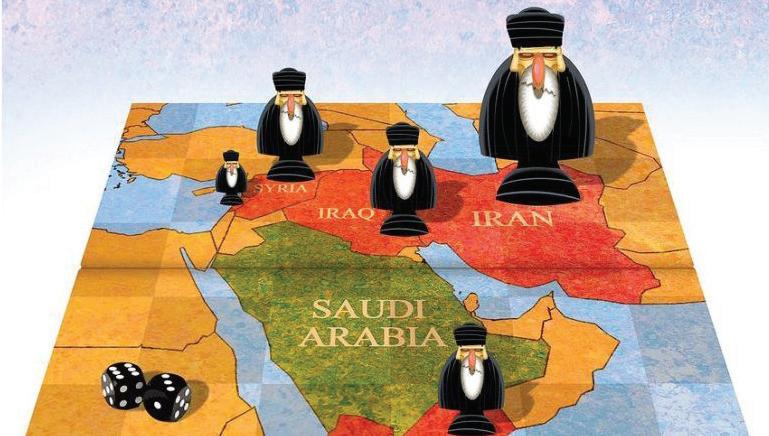
Its approach to the Gaza war and the Red Sea crisis has been cautious as it strives to avoid escalating the war into a regional war and provoking Tehran, which supports the Palestinians and the Houthis.
Crown Prince Mohammad bin Salman (MBS) has been globally acknowledged as a ‘man of transformation’ for Saudi Arabia. As the architect of Saudi Vision 2030, MBS wants to diversify his nation economically, socially and culturally. In this, the West, the technologically empowered Israel, and the vast markets of India have a big role to play. For Vision 2030 to fructify, peace in the Middle East and rapprochement with Israel are two prerequisites.
The October 7th Gaza attack seems to be a wellplanned move that aims not only to bring Palestine statehood back on the global negotiation table but, more importantly, derail the amalgamation of the oil-powered Middle East economies with the global markers. The usual suspects in this conspiracy are not difficult to identify- they are those who will be left out in the cold if Saudi Vision 2030 achieves its immense potential.
The Kingdom holds religious and cultural significance in the Arab and Islamic world as the custodian of Mecca and Medina and a promoter of cultural connections. In recent years, Crown Prince Mohammed bin Salman has initiated various efforts to promote interfaith dialogue across different religious groups and faiths, such as a first-of-its-kind multi-faith conference in 2022.
Its peace-building efforts are not restricted to the regional level but extend to the global arena. This was witnessed in its mediation and peace-brokering efforts in the Russia-Ukraine war.
THE IRAN- SAUDI CONUNDRUM
No analysis of Saudi Arabia would be complete with-
out an insight into the dynamics of the Saudi-Iran relationship. Some have described it as a managed rivalry while others have termed it an Islamic Cold War.
In the face of Israel’s continuing assault on the Gaza Strip to crush Hamas militarily for good, Riyadh has had to recalibrate its position more than Tehran. In the Islamic Summit, the Iranians called on all Muslim countries to cut off relations with Israel and declare the Jewish state a terrorist entity.
However, the Saudis have moderated this position by opposing both these calls while continuing to criticise Israel.
For Iran, Saudi Arabia’s responsibilities towards Islam have never been devout enough. Some Iranian extremists even consider the Saudis to be beyond the pale of Islam itself.
They believe that the Saudis have corrupted the true and original Islam. For these hardliners, any compromise with Saudi Arabia is anathema. These people will not rest until the Saudi regime is finally overthrown and replaced with their version.
Saudi Arabia, too, has its issues with Iran. Sunni Muslims are the majority of the population in the Kingdom. However, there is a minority of Shia Muslims in the oil-rich eastern provinces of the Arabian Peninsula. There is a historic sense of disgruntlement amongst these Shia communities.
Iran, on the other hand, has considered itself to be the supporter of oppressed Shia Muslims throughout the world. With such an ideological bent of mind, the Iranian government could never ignore the Arab Shias right across the Persian Gulf. Its propagation of the extreme form of Shia Islamic ideology and its influence on the Islamic world challenges the Saudi monarchy’s influence.
15 WEST ASIA’S RISING POLE
INDIA-MIDDLE EAST-EUROPE CORRIDOR (IMEC)
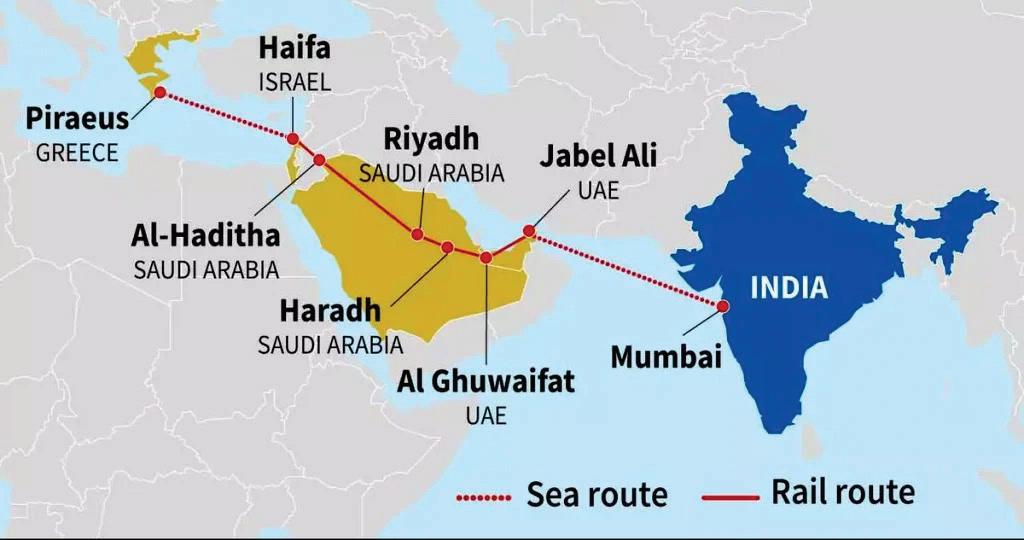
ECONOMIC HEFT
Saudi Arabia plays an integral role in maintaining economic stability in the region and contributes to its overall development. Not only is it the largest country in the Gulf Cooperation Council (GCC), but it also supports other nations in the region.
As one of the world’s largest oil producers, the Saudi nation has a prominent position in the global oil market and economy. This enables it to contribute to limiting volatility in oil markets, as witnessed in 2011 when the Kingdom and other GCC producers significantly increased oil production to restrict oil market disruptions resulting from strife in Libya.
However, the Kingdom’s importance is not restricted to oil. Its strong economy makes it a key source of fund inflows for a range of countries: it is a major investor for several Arab neighbours and South Asian countries as well as a source of remittances. Additionally, it is one of the largest providers of official development assistance in the Gulf region.
Interestingly, the oil-rich nation has become a key contributor to global climate transition initiatives. It is building a futuristic city, Neom, that will be powered by green hydrogen, a carbon-free fuel. As the Saudi leadership looks to diversify from a fossil-fuel-dependent economy, green energy is a priority.
Further, its active participation in international financial institutions such as the International Monetary Fund (IMF) and economic decision-making bodies like the Group of 20 (G-20) give it economic prominence on the world stage. This allows it to represent regional concerns on international platforms and present them in key economic and financial decision-making processes.
INDIA AND SAUDI ARABIA - COMMONALITIES
India and Saudi Arabia share common interests and concerns. Both nations are interested in establishing
balanced relations without getting ensnared in superpower rivalries. Saudi Arabia is keen to promote regional reconciliation and establish relations with important countries in Eurasia instead of focusing only on the United States. India, too, is keenly interested in promoting global south concerns and playing a leading role in this domain.
Both nations look to represent regional and global south concerns at international fora that have been traditionally dominated by Western concerns.
At a domestic level, both countries share certain interests, such as furthering their socio-economic progress, including women’s progress, as well as investing in green energy. They also share common concerns, such as terrorism and religious extremism in West Asia. Saudi Arabia faces militant challenges on multiple borders, particularly from Iran-backed militant outfits.
OPPORTUNITIES FOR INDIA-SAUDI COOPERATION
India’s technological expertise in areas like Information Technology (IT), aerospace, and biotechnology allows it to share knowledge and educational resources, skilled professional advisors, and R&D tools with Saudi Arabia. In turn, the Saudi nation can share its technological expertise in different areas like telecommunications, cloud, and cybersecurity, to name a few.
Additionally, there is scope for the two nations to support each other’s technological development through investments such as Saudi Basic Industries Cooperation’s (SABIC) $100 million investment in an innovation centre in Bengaluru and the investment in the Indian health tech company HealthifyMe. In turn, Indian companies such as Tata, Wipro, and Air India have made significant investments in Saudi Arabia. Larsen & Toubro has even secured a deal to implement one of the world’s largest solar projects in Saudi Arabia.
Economic cooperation is another key avenue for India-Saudi ties. Saudi Arabia is one of India’s largest foreign direct investors and is a major market for a range of
16 WEST ASIA’S RISING POLE
manufactured goods such as automobiles and electrical and mechanical machinery. The Saudi Kingdom is one of India’s largest trading partners and a leading oil supplier.
Trade between the countries exceeded $52.8 billion in the fiscal year 2022-2023. Leading Indian exports to Saudi Arabia include Organic Chemicals, Rice (Basmati), Motor Vehicles, and Iron and Steel.
Leading exports of Saudi Arabia to India include crude petroleum, petroleum products, manufactured fertilisers, and plastic raw materials. However, a gaping trade deficit persists, with India’s imports far exceeding its exports to the oil nation. This is largely due to India’s high reliance on Saudi oil.
As the Kingdom looks to encourage companies to produce locally, there is scope for Indian companies to set up shop in the Gulf country.
Not only could this help build Saudi Arabia’s private sector industry, but it could also bring skilled experts to facilitate knowledge sharing while hiring locally.
This increased demand for skilled workers could encourage local people to build skills and join the industry, contributing to a key target for the Saudi government - increasing workforce participation, particularly for its large cohort of young people.
Ties between the two countries are strengthened by the large Indian community working in the Kingdom. This diaspora contributes approximately $ 8 billion in annual remittances to their families back home in India.
It includes unskilled Indian workers contributing to Saudi Arabia’s labour force and skilled workers, including entrepreneurs and individuals involved in different sectors like education and engineering.
EXPERT COMMENT
We are the second largest oil producer in the world. Every morning, we wake up and find ourselves looking around us and seeing the potential challenges and threats we face.
In the northeast, we face the presence of a heavily armed Iran with nuclear aspirations, while in Iraq, numerous pro-Iranian militants reside along our borders. The situation in Syria remains dire. Five major powers are competing there - Russia, Turkey, Iran, the United
Healthcare cooperation in areas like vaccine development and setting up speciality hospitals are key possibilities for private-sector interaction. The joint manufacture of pharmaceuticals is another way to benefit from combined resources and expertise.
Cooperation and agreements between educational institutions could help raise standards, widen exposure, and scale up vocational training in both countries.
Lastly, India and Saudi Arabia stand to benefit from cooperating in global fora as they did during the G-20 hosted by India, which witnessed the launch of the India-Middle East-Europe Economic Corridor (IMEC).
The initiative is both economically and strategically significant. It will also further the two countries’ efforts to bring their regions to play a more active role on the global stage. From the Indian perspective, the India-Middle East- Europe Corridor is vital to this vision.
Saudi Arabia is poised to play a leading role in West Asia. Its efforts to maintain stability and promote reconciliation in the region become all the more important in light of the Gaza War and the Red Sea crisis. The resource-rich Kingdom is not just an anchor of political stability but also contributes to economic development in West Asia.
India and Saudi Arabia share several common interests and concerns at the domestic, regional, and global levels. The two nations stand to benefit from sharing technological know-how and investing in each other’s technological endeavours. Other avenues for cooperation include economic, healthcare, and educational fields.
States, and Israel. Lebanon lacks an active government, with Hezbollah exerting control over the country. In Palestine, there are continuous, enduring decades of occupation. No hope on the horizon for resolving this issue. Moving a little bit to the West, Sudan grapples with fragmentations and devastating effects, ongoing conflict, and the Houthi militants in Yemen pose a permanent threat to the southern border of Saudi Arabia.
AHMED ALI ALMAIMOUNI
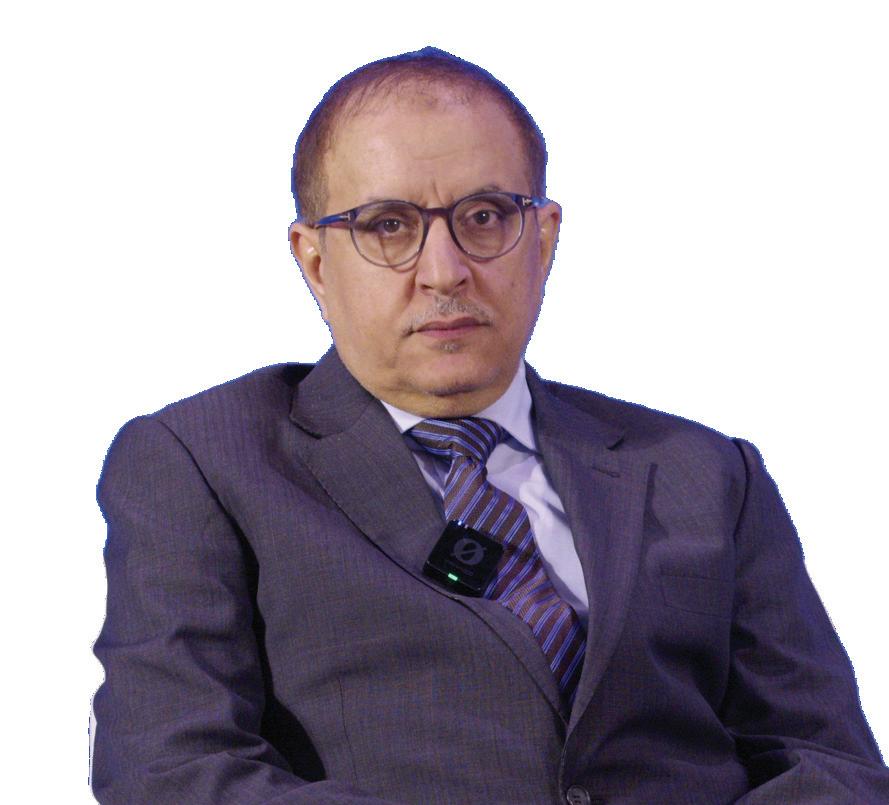
17 WEST ASIA’S RISING POLE
Assessment
Director of Research and Studies Center, Rasanah Institute, Riyadh, Saudi Arabia

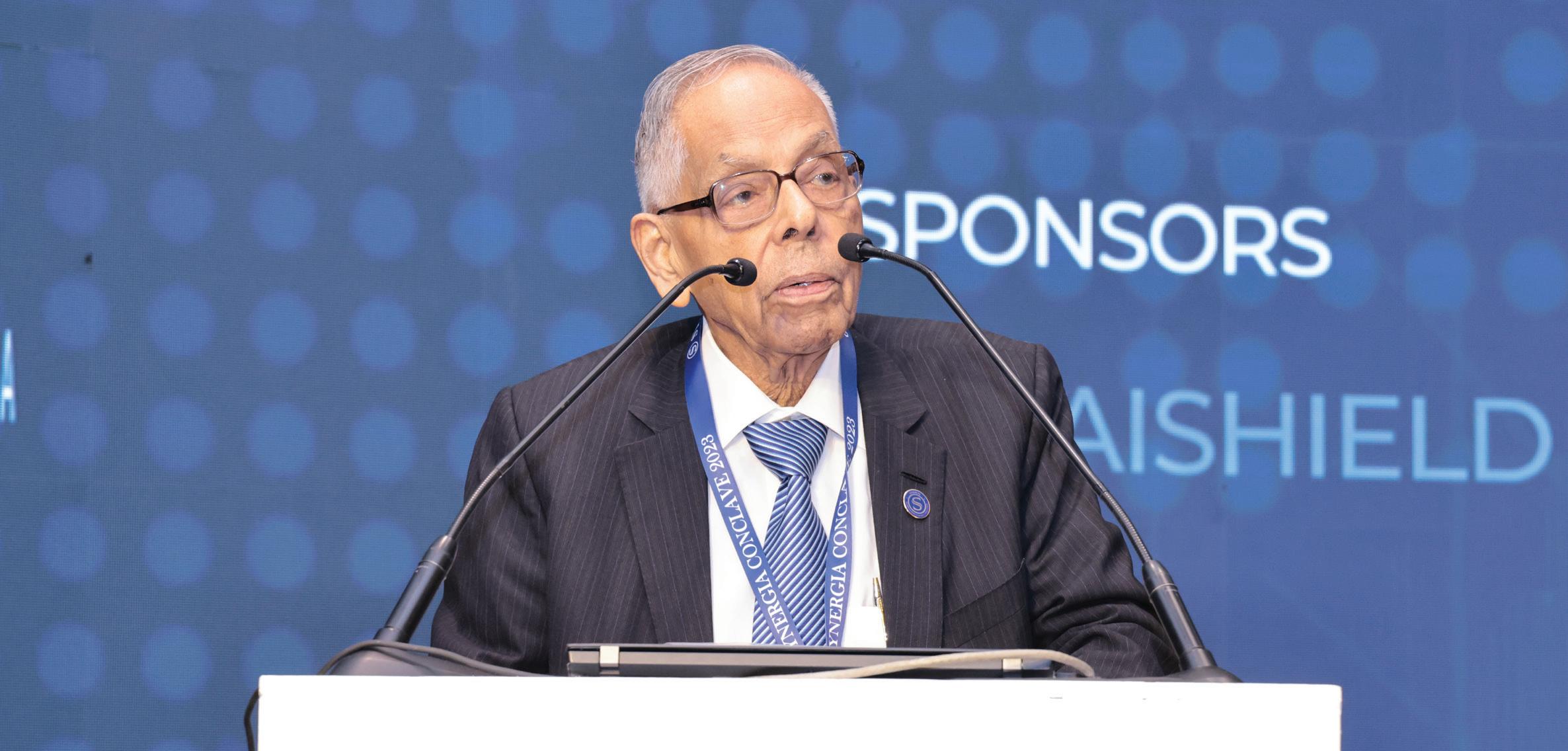
EMERGING GLOBAL RISKS & INTELLIGENCE


Innovative technological advances and skills, not excluding artificial intelligence, cannot make up for the human factor in intelligence.
This article is based on the round table curated by Mr. MK Narayanan, former National Security Advisor, India Global Risk and Intelligence Assessment at the 9th Synergia Conclave 2023
The world is awash with risks. On the global scale, it could broadly be divided into two categories: Geopolitical risk and digital risk.
The 21st century dawned with an event that shocked not merely the United States but humanity at large. September 11th, 2001, was the first of many incidents that depicted the nature of global risk in the 21st century. Less than a quarter of a century later, the world has again been shocked by the October 7th attack on Israel by Hamas, one which is having a seismic impact on the world. Both events represent but one facet of global risk today, involving fanaticised groups resorting to terrorism to reinforce their beliefs.
In the realm of geopolitics, the world has become extremely unpredictable today. Russia’s war against Ukraine in February 2022 has upended the security situation in Europe. The explosive situation in the Middle East and unfolding events in the Asia-Pacific region again underscore that risk is inherent in the nature of global politics, and nothing can be taken for granted.
GEOPOLITICAL RISKS
Ukraine Conflict. While the Ukraine conflict in 2022 marked the beginning of this trend, what is disturbing
The
craft of intelligence
has undoubtedly evolved, and new methods, methodologies,
and technologies
are constantly
emerging. This has made anticipating events easier but has not removed the need for anticipation, assessment and other arcane skills. Innovative technological advances and skills, not excluding artificial intelligence, cannot make up for the human factor in intelligence.
is the prolongation of the conflict. It is clear that if the Ukraine conflict continues to fester, neither Ukraine nor Russia will benefit from it. New technologies and new strategies do not appear effective enough to sort out matters on the battlefield.
What it has done is to raise the risk of one side or the other considering resorting to the ultimate weapon, nuclear- a so-called Oppenheimer moment to win battles at any cost, the resultant devastation notwithstanding. Prolonged wars require a steady hand on the battlefield, which Ukraine conflict does not have.
It needs a stable domestic front that is again missing in both Russia and Ukraine. While the appeal of technology may be universal, its application is often doctrine-specific. Failure to appreciate these aspects enhances the level of risk.
SYNERGIA CONCLAVE 2023
Indo-Pacific: This applies mutatis mutandis to the Indo-Pacific region. The Indo-Pacific is increasingly seen as the primary zone of strategic contestation and competition. A tendency in some quarters to replicate the United Front tactics, U.S. plus NATO in the West, based on the purported success of such tactics to stem Russia’s advance in Ukraine, seems to encourage the adoption of similar tactics in the Indo-Pacific region.
This would not only enhance the risk but also have disastrous consequences for the world. A gaggle of security arrangements, AUKUS and Quad, for instance, is no substitute for NATO. In Asia, unlike in Europe, there is little evidence of any willingness to enter into a military confrontation with China. Treating the China threat in the way the West has dealt with Russia’s attack on Ukraine can be extremely dangerous and risky.
China is well prepared for a protracted struggle with the United States and its allies, and the world should not underestimate this. While both the United States and China are intent on weaponising the international institutions in their image, little thought is being given to the import of how it is impacting other countries. The situation is extremely fragile and risky. The world may well be at a tipping point. The situation demands a well-crafted, independent strategy rather than looking for a quick solution. Unfortunately, this is not available.
Israel-Hamas. The Hamas attack on Israel has raised the risk in the Middle East and also geopolitics overall. Israel’s reaction is like employing a sledgehammer to swat the Palestinian fly. And apparently, try to redeem a prophecy made many years ago by one of their former prime ministers, Golda Meir. If this persists, it could totally unravel the world order.
The savagery demonstrated by both Hamas and the Israeli state only confirms that the international order today is indeed in deep trouble. Quite a few of the terrorist organisations in the region, apart from Hamas and the Palestine Islamic Jihad, are getting greatly encouraged to launch more attacks, thus demolishing all hopes for peace in the Middle East, the Abraham Accords notwithstanding. The level of risk in the Middle East is higher than ever before and can potentially unsettle the world.
DIGITAL RISKS
The second risk category involved the technology domain, essentially digital risks, especially artificial intelligence and cyber. In their separate ways, both are equally disruptive. As the digital threat scenario expands exponentially, digital uncertainty morphs into radical uncertainty. As it is, artificial intelligence presents a grave threat.
With the emergence of Generative Artificial Intelligence (GenAI), the situation will become still more critical. There is a real risk that it could alter the very fabric of nation-states, with truth itself becoming a casualty, the deep fake syndrome, for instance. The use of artificial intelligence, which is being talked about so
much, is fraught with many risks. It has to be done with utmost care. Artificial intelligence is capable of being vitiated and is subject to different types of adversarial attacks, such as poisoning, which typically aims to degrade a module’s ability to make relevant predictions, backdooring, which involves a malicious trigger input that causes the AI module to misclassify inputs, and evasion. Hence, the a need for caution in thinking that artificial intelligence is the ultimate weapon.
Cyber threats pose an omnipotent security risk. The world is already awash with threats such as ransomware, phishing, and zero-day syndrome. But there is much more to come. Digital trackers logged more than 5.5 trillion cyber-attacks worldwide in 2021; that is 14.5 billion daily attacks, 168,000 per second, and 67 cyber-attacks for every man, woman, and child on earth.
Reliable figures for 2022 suggest that the figure could be as much as 11 trillion cyber-attacks in 2022 or even higher. India is reportedly among the top 3 cyber-attacked nations in the world today. Together, AI and cyber are poised to emerge as the biggest danger we face and the most critical element in any future war.
INTELLIGENCE ASSESSMENTS
Intelligence suffers from long-term historical amnesia, compounded further by the fact that it is the only profession without any serious literature and is not conversant with its past. All this is notwithstanding that most intelligence professionals often quote the Chinese general Sun Tzu and the Art of War and frequently refer to Kautilya’s Arthashastra from India.
In most situations today, intelligence fits well into the “missing dimension” description. The woeful inaccuracy of many intelligence field reports often cloud many an assessment, especially when these reports are camouflaged as most reliable.
The most conspicuous instance of this kind concerns Iraq’s weapons of mass destruction under the regime of Saddam Hussein. The attack on Saddam’s Iraq by Western forces was based entirely on wrong intelligence and reflects what intelligence professionals typically call groupthink of the intelligence community, both analysts and collectors while interpreting ambiguous evidence as conclusively indicated.
Today’s focus is on the massive failure of the Israeli intelligence agencies that allowed the October 7th assault to take place. While Mossad and Shin Bet have a well-deserved reputa tion, it is apparent that they signally failed if intelligence is synonymous with anticipation. No amount of tech nology can substitute for carefully analysed source information.
Merely being technologically savvy is not enough. It is an anal ysis of even fragmentary pieces of ground-level intelligence that of

19 EMERGING GLOBAL RISKS & INTELLIGENCE

ten turns rough into gold. An analyst’s thought process is crucial in this regard. And good analysts need to and have developed a sixth sense to anticipate events and concerns.
Developing a possible range of options to deal with next-generation threats is a basic necessity for every intelligence agency living in difficult neighbourhoods.
How Hamas succeeded in using a combination of rudimentary techniques and tactics will be a model to follow for other nations fighting a technologically superior nation. It will also become a textbook for all intelligence professionals. Hamas has unwittingly succeeded in establishing that intelligence is possibly the most vital instrument in any conflict. And that requirement for good intelligence is not conditioned by predetermined ideas and thoughts.
The craft of intelligence has undoubtedly evolved, and new methods, methodologies, and technologies are constantly emerging.
This has made anticipating events easier but has not removed the need for anticipation, assessment and other arcane skills. Innovative technological advances and skills, not excluding artificial intelligence, in analysing various forms of electronic exhaust cannot make up for the human factor in intelligence.
A human source at the right place who can provide advanced information at the right time that an expert analyst can transform into real-time intelligence is still the holy grail of intelligence.
All intelligence analysts, therefore, need to heed a quote from the Isha Upanishad, which has a verse that observes, “Into a dark darkness enter those who dwell
in ignorance, and into a darker darkness enter those who worship knowledge.”
Groupthink in intelligence can be fatal, as all point to the same conclusion, thus neglecting differing viewpoints.
While intelligence agencies like Mossad get depicted as ‘action doers’ in popular culture, intelligence analysts manning backroom desks do most of the back-breaking work.
It calls for a 360-degree thinking process, which is not easy, and there are no kudos. You need the best brains there because you are trying to pick a speck from a whole mass of information, a lot of which could be fake and deliberately planted.
In the Hamas case, there is a possibility that Hamas turned around artificial intelligence and fed wrong information through the AI channels. Apparently, Israelis have stopped or lost the art of having human sources amongst the Arabs.
Intelligence agencies are now all conditioned by what is being called as “electronic exhaust.” It requires analysts to have a much deeper understanding of the people or the issue under analysis.
Israeli intelligence may have faltered by being contemptuous of Hamas, labelling them as a third-rate organisation, but clearly, there are bright people amongst them like everywhere else. So, great care must be taken in collecting and assessing intelligence. The British went wrong in Iraq with their assessment of Saddam’s WMD because there was groupthink on its existence, while three or four people who dissented were overpowered by the groupthink.
20 EMERGING GLOBAL RISKS & INTELLIGENCE


OCTOBER 7 th: AN ANALYSIS



The October 7th attack was a culmination of high grade deception and good operational security on the part of Hamas.
This article is based on the round table curated by Mr. Uzi Arad, former director of Mossad and former national security advisor to Benjamin Netanyahu, on Global Risk and Intelligence Assessments at the 9th Synergia Conclave 2023.
On September 11th, this century began with a surprise attack by a terrorist group, oriented as a jihadist, radically Islamic, which created havoc and massive civilian casualties. Al-Qaeda is one type of the multiple forms of Islamic extremism; employing terrorist tactics, it was able to surprise even the greatest of powers in possession of the best of intelligence capabilities, killing en masse thousands of civilians in the Twin Towers of Manhattan, Then on October 7th, nearly 1300 Israeli were killed in an identical atrocity. It is no coincidence that the two crises originated from the same type of adversaries who present one whole risk to the world.
Therefore, we include the ongoing war in Gaza as, in effect, a part of the larger global risk that should be confronted cooperatively among all nations being targeted by such terrorist organisations. They are everywhere -in Asia, Latin America, Europe, and their place of origin, the Middle East.
HOW IS OCTOBER 7TH DIFFERENT?
Many attributes to the October 7th attack should not go unnoticed, especially the fact that on the eve of
While failing to give a credible warning of the assault, it is evident that Israel exaggerated or overstated the value of technical means and all kinds of advanced technology. It fell short of having good, satisfactory intelligence regarding the direct possession of a warning due to sufficient intelligence collection in this domain.
the attack, Israel itself found itself at the very depth of an internal crisis with deep divisions within Israeli society. There were ongoing mass demonstrations to see the removal of the government, a government that had been suspected of eroding Israel’s democratic foundations.
It was a constitutional legal crisis, but it was so large-scale, involved many disputing parties, and became something close to a civil war that fell short of being violent. That immediately becomes a point of vulnerability when the nation is completely disoriented regarding its leadership performance and the people’s solidarity.
On Black Friday, Hamas went on the attack, achieving total surprise. For any intelligence agency, nothing could be more disastrous, strategically and in every other sense, than a surprise attack. The Israelis quickly counterattacked, and the battle remains open, with
SYNERGIA CONCLAVE 2023
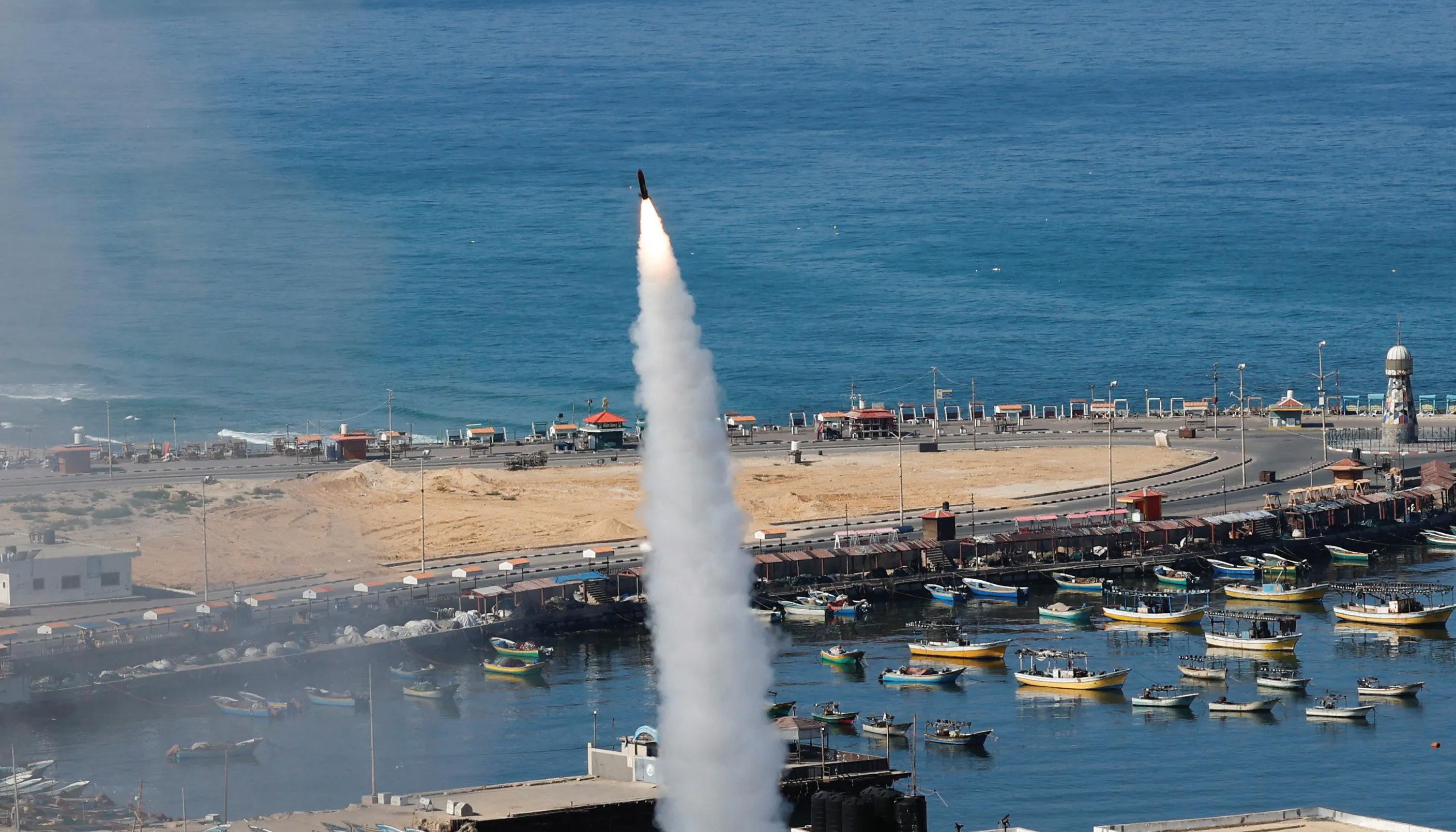
no one having any clue how it would finally unfold. The taking of hostages has inordinately complicated the whole situation.
Hostage-taking as an instrument of terrorist organisations has become almost a component of power-seeking decisions on the battlefield. The Americans had a minor experience of that when they had their embassy overrun, and their personnel were kept there as hostages for a year-long, turning into a drama full of agonies and a dramatic rescue attempt that failed.
Now, Israel has to suffer another variation of hostage-taking. In that surprise attack, the assaulting forces went in not only to destroy or to kill but also to capture civilians of all kinds- children, elderly, women- and sped them back to Gaza to their underground bases to be used as an instrument of power that terrorist organisations have employed elsewhere.
The hostage situation is, therefore, complicating the efforts of the IDF to destroy Hamas as an organisation.
ISRAELI FAILURES
Israel has been candid about its failures; immediately, both the chief of intelligence and the chief of staff tendered their resignation; they understood this was a failure of their systems and duties.
Having assumed their responsibilities in the entire fiasco, they did their duties while there was no escape from being called to task. Once hostilities subside, a commission of inquiry will pinpoint responsibilities.
While failing to give a credible warning of the assault, it is evident that Israel exaggerated or overstated the value of technical means and all kinds of advanced technology. It fell short of having good, satisfactory intelligence regarding the direct possession of a warning due to sufficient intelligence collection in this domain.
This is, in fact, a success of Hamas in using very tight compartmentation, very strong discipline, and cruelty towards their own people for any violation of security and, in that sense, making it very difficult for Israel to obtain necessary intelligence.
Israel also failed to know its enemy as it had refused to accept the very character of these jihadist groups. The assumption was that terrorist organisations mellow become more moderate with time, particularly when they assume power. And that was the instinctive expectation.
And that is why, for some time, it was believed that through a combination of all kinds of temptations, Israel could get Hamas to give up the offensive option and to render a situation to one of relative avoidance of hostilities.
The Hamas never denied its long-term objective to destroy Israel; their opposition to Israel is ideological, religious, and it’s total. But they claimed and appeared willing to have a kind of truce or ceasefire for convenience’s sake. It is a failure of anticipation, of imagination and intelligence.
Even worse, Israel was deceived. Hamas employed deception measures to lure Israel into not understanding what it was seeing. This is a gross violation of the old dictum: know your enemy- not only have information about the enemy, its intentions and capabilities, you have to know in the most cultural, historical context. And here, it failed miserably in seeing through the viciousness, cruelty, savagery, and barbarism that characterised that organisation. By the way, Hamas has practised this on its Palestinian people and other political organisations.
Cruelty is something that goes along with what they essentially committed when Hamas attacked Israel. This savagery shocked us into the immediate reaction
22 OCTOBER 7th: AN ANALYSIS
we felt we needed to do, not to wait one moment, not even for better preparation.
Now, as for the other failure, that of defence. Defensive measures failed miserably because we thought by establishing walls and all kinds of measures, we would create obstacles in such a way that even if they attack, and even if by surprise, they will still be limited in their ability to penetrate Israeli territory in such depth and on such a large scale. Obviously, that defense crumbled completely.
Thanks to the improvised defence put up by volunteers or from units that rushed South without being called, mounting a kind of blocking action to contain the Hamas penetration of Israeli territory. They intended to capture military bases and facilities and possibly reach as far as the West Bank. That was not accomplished, but they did accomplish a lot.
How did all this happen? Because of misplaced political priorities, most of our regular troops were stationed on the West Bank, fearing that that was the problem area, at the expense of defensive capabilities on the southern front, the Gaza front. This is an error that is political in nature. Add to this the flaws of intelligence; intelligence abused by politicians becomes poisoned.
Deterrence applies to nuclear risks. But on the conventional level, there is an alternative to deterrence: defence. But once you sacrifice defence, you become wholly dependent on deterrence. Here, our deterrence assumption or posture was levelled as a directive to the military to increase the cost of any aggression.
However, such an increase in the cost entails a cost to the civilian population. At the conventional level, there is a proportionality principle and a need to avoid escalation. Our reliance on that kind of deterrence was simply insufficient. We did not deter the Hamas. No There is no room for hubris in intelligence; you cannot take your adversary for granted. To achieve 360-degree coverage, open-source intelligence cannot be neglected.
matter what threats we levelled, they were insufficient. I would argue that they were not in place right from the start.
The Israeli leadership believed that Hamas was not putting into effect what it evidently practised and exercised because “they were deterred”. But the question remains whether Hamas was deterred in reality.
There was no such confirmation. We may have been fed wrong information into believing that is the case, which was part of the deception exercise practised on us; believing that they are was a completely flawed posture.
This is a risk that indeed is global, which is affecting other societies, other democratic societies, and other non-Muslim countries that are also victims of ongoing activities of organisations like Hamas. Hezbollah is another case, similar yet different. Iran assists both of them, and here is the elephant in the room that I don’t want to touch but it is clearly connected.
So we are facing a larger, in a way, global risk here, which connects Iran with its nuclear ambitions as a variation of the theme. Still, it includes Iran and its deployment of proxies all over the Middle East and beyond. It involves Iran itself being led by fundamentalist Islamic leaders who share the battle against the West, against the Western civilisation, against the democracies of the world.
Israel has learnt its lesson. The failure has been a failure of omission. I would hope that ingenuity, professionalism, and dedication would make it so that we would have sufficient coverage through reliable sources of obtaining advanced warning. There is a lot to do there, but it can be done. Victories are not promised on the battlefield, and warnings are not guaranteed in the field of intelligence.
EXPERT COMMENT
In fact, 70 per cent of intelligence comes from open source, including social media as of date and this is not being factored sufficiently in the intelligence reviews.
It is very difficult to understand how the Israelis failed. There is talk about technical intelligence not being good enough. I have been exposed to the kind of
sensors that Israel uses; probably, inputs from the sensors were ignored or missed out, or somehow, these sensors were switched off. Because these sensors are agnostic to any intervention, any intrusion would be honestly reported. Somewhere, somehow, the reporting channel seems to have been blocked.
At the end of the day, I would give a lot of premium to open-source intelligence and the activities of Think Tanks like Synergia to make the right assessments.
MR. ALOK JOSHI
Member National Security Advisory Board, India.
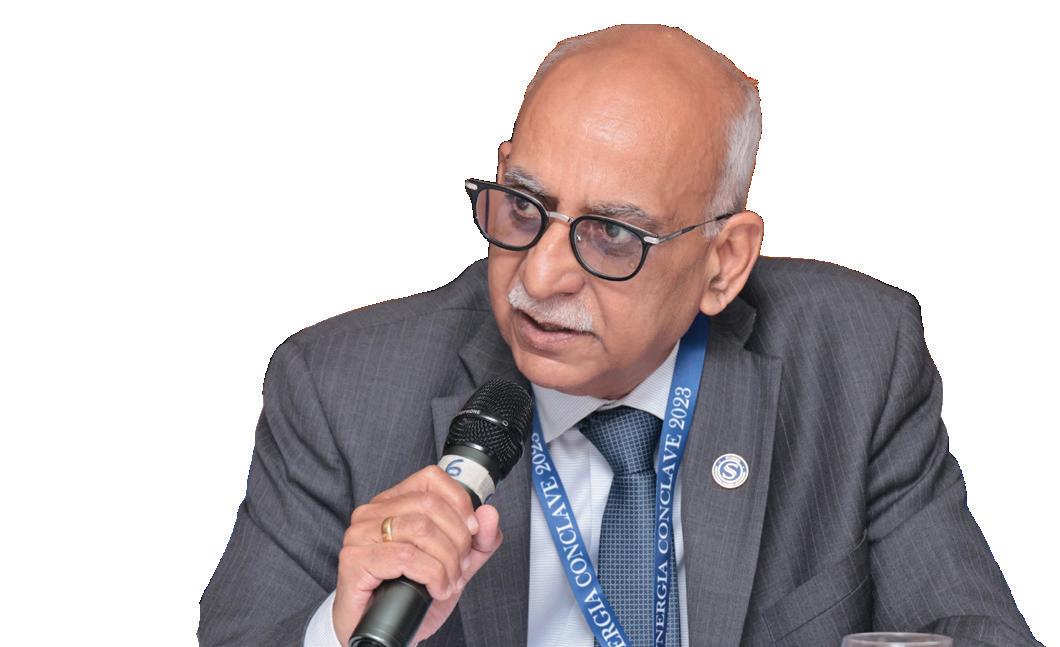
23 OCTOBER 7th: AN ANALYSIS
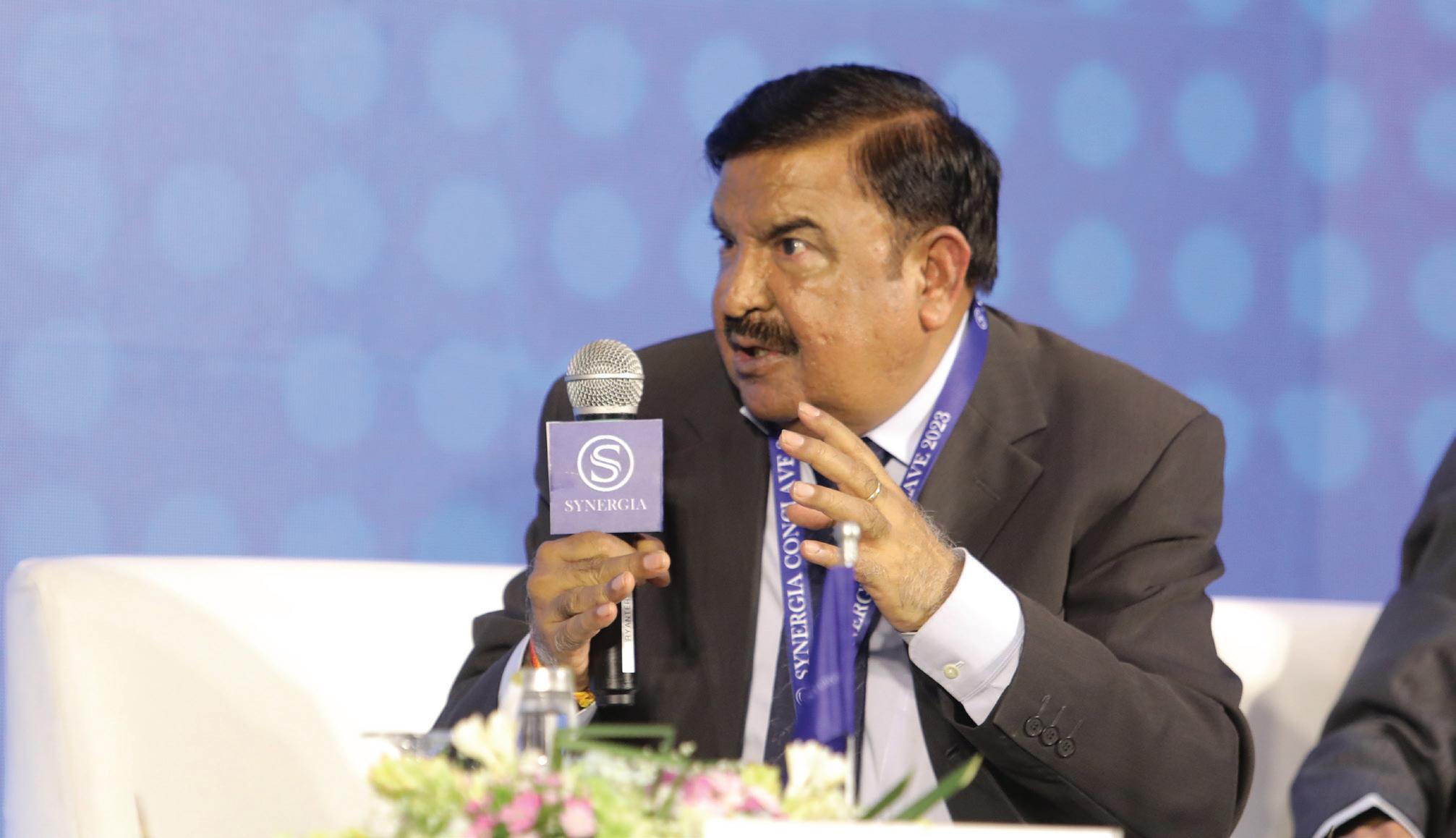
THE POWER OF DOMAIN KNOWLEDGE
“There is no substitute for domain knowledge. There’s no substitute to having lived in the field.”
Just as generals always prepare for future wars by dissecting the last war, analysts also go by past records to analyse why such intelligence failures occur.
Afghanistan is a good example. A sole superpower, which has ushered the revolution in military affairs, smart bombs, and drones and destroyed Saddam’s military, faces just five years later a ragtag bunch of insurgents armed with AK-47s, etc., in the mountains and what happens? The superpower eventually loses. Why?
Because if you have domain knowledge, if you know Afghan history, if you know what the Afghans will do, you will realise that the Afghans will win, if not now, ten years later, twenty years later, thirty years later.
In the last ten years, intelligence and risk analysis have been going towards artificial intelligence, technology, and many other things while domain knowledge is lost.
Take, for example, the war in Ukraine. If you know how the Russians will behave, how resilient they are, and that they are fighting for their very existence, you will realise that their attack on Ukraine is not a war that they wanted; it has been thrust on them. This is debatable, but such is their perception.
They will behave in a particular way if their patience is tested too much because it’s not a war between Russia and Ukraine; it’s a war between Russia and NATO,
and NATO has tried everything and comes a cropper. Now, in its Special Military Operations, Russia has tried everything and come a cropper.
There is a stalemate, and now it is a war of attrition.
I will cite the experiences of a star political correspondent of a weekly in India. Every time he came to Delhi, he used to be called by the political counsellors of the U.S. Embassy and the USSR Embassy. He was asked to give his opinion about politics in India in general.
So, he says the Americans had a framework, algorithms, models, and data, which gave the caste and religion-based trends that predicted a particular political outcome in an important regional election in India.
On the other hand, the Russians declared one individual as the possible winner based on domain knowledge of their grassroots sources. Unsurprisingly, the Russians won the wager when the election results were announced!
Therefore, there is no substitute for domain knowledge; there is no substitute for having lived in the field.
No matter what technology you have, the technology will go wrong in sporting events. It will go wrong even in, for example, the subprime crisis.
Why didn’t anyone see the subprime crisis coming? Did any heads roll in these credit rating agencies? They felt nothing was safer than mortgage-backed securities.
But to whom are you lending mortgage-backed securities? That was not questioned.
24 OCTOBER 7th: AN ANALYSIS
EXPERT COMMENT
MR KULBIR KRISHAN Former DGP, Meghalaya, India



RUSSIAN INTERNATIONAL AFFAIRS COUNCIL - SYNERGIA INTERVIEW
India Seeks Arctic Partnerships with Like-Minded Nations
This article is curated based on discussions at the Russian International Affairs Council & Synergia Foundation Conference, focusing on Indo-Russia bilateral cooperation and key engagement opportunities.
In recent years, Russia has perceived India as one of its key partners in the Arctic. In turn, India is taking an active interest in the region. The country’s goals and objectives are outlined in the official Arctic Policy, with practical steps in the Arctic underway in line with the Document. What areas are of key interest to India? How does India see the model of governance in the Arctic? What is the vision for interaction with Russia? What is the role of the academic community in fostering relations between Russia and India on Arctic issues?
Dr. Natalia Viakhireva, RIAC program manager, discussed these and other issues with Lt Gen G A V Reddy, Strategic Advisor, Synergia Foundation (India) and Maj. Gen. Ajay Sah, Chief Information Officer, Synergia Foundation (India).
India published its Arctic Strategy in 2022. The year of 2022 happened to become a turning point for international cooperation in the Arctic. What are the core interests that India has and pursues in the Arctic? Do you see any changes in the vision of India’s policy in the region since 2022 amid changes in the Arctic?
Maj Gen Ajay Sah: Among the various opportunities that India sees, in respect to Russia, the Arctic is at the top of the agenda. It is right at the top, since Rus-
In the Arctic, Russia is investing to create infrastructure, non-military infrastructure. That is where India can step in; to help Russia with building infrastructure projects in the region, which serves to improve the region’s human development. So, all these are peaceful projects that have nothing to do with militarizing the region and on the other hand will help local habitat.
sia is amongst the largest stakeholders of the Arctic’s resources. Unlike Antarctic, which has been accepted a part of the “global commons”, people do not accept the Arctic as such.
Every country that is part of the Arctic “club”, the Artic Council, says that they have sovereign national stake in terms of ground which they own. Canada is one of the biggest claimers, but Scandinavian countries, Greenland, Russia, the U.S. are on the list as well. India feels that China, without having any physical claim in the Arctic, is trying to play a greater role.
There is the Arctic Council, where India and China are observer states. So, we want to play a greater role in the Arctic because it beautifully links the international community. One of the developments that Russia is pushing for today is to build roads in Siberia to the Arctic. India also wants to play a role in the economic development and discuss ideas. We want to be part of Russia’s route in the Arctic. Once it opens, which
INDO-RUSSIA

the climate is ensuring, the Northern Sea Route will be open for a larger part of the year. India is very keen on that, but it does not want to claim land. Unlike Antarctic, which is part of the global commons, every country with a physical presence in the Arctic will be the first to claim the Arctic’s resources.
Somebody from Asia—Japan, India, even China— may not be able to exploit the resources directly. I don’t think any Arctic countries will permit it. So, if there are early partnerships in exploiting the Arctic resources, we want to be involved. It is like the Sakhalin oil fields that we invested in. If we become a participant in the development of the Arctic at an early stage, then we strengthen to benefit nationally. And what better partner can we have than Russia?
Lt Gen G A V Reddy: I would state that there have been some specific domains outlined as Priority areas in the New policy of India for Arctic region. But India’s Arctic Vision of building partnership for sustainable development of region remains unchanged. India has a vision to contribute to the region by sharing expertise in digital economy, infrastructure development and human development. Having talked about Indian core interests, India is only an observer now and certainly we can partner with like-minded country, let’s say, Russia, where we can be contributing more to the entire region. The Indian vison will not change, being a core interest.
India has been an observer in the Arctic Council since 2013. Though the Council hasn’t been functioning in full scale since 2022. Are there concerns in India about the status and role of the Arctic Council and India’s role in it? How the governance structure in the Arctic is seen from India? Should the Arctic Council be preserved, or any alternative structure could and should be created?
Lt Gen G A V Reddy: As regards to the status of India in Arctic Council, even being an observer now, India
is contributing substantially by sharing the expertise in many domains of common interest. However, the Indian concerns are largely related to the rapid global warming/ environment protection and climate changes.
The other major concern is about increased commercialization of arctic region as well as the enhanced geo-political tensions which is building up due to competition in exploiting the vast resources.
But the main concern of India is related to the need for inclusiveness of arctic council representing the global south and their interests in the region. The arctic council definitely needs to be preserved, albeit duly reformed to make it inclusive and effective organisation. There is no need to create any other alternate structure to focus on core issues of arctic.
So, maybe responsible nations would like to preserve the Arctic, but it is only possible when they address the adverse climate impact on priority. It is beyond one nation or certain select group of nations to preserve the Arctic region. It must be a combined effort because of the adverse impact of climate for all of us.
Then beyond that, if a responsible nation wants to contribute to the global common good, should think of preserving the Arctic, not just exploit the Arctic.
So, it is less about the importance of the Arctic Council, and more about the final goal and Arctic vision for India?
Lt Gen G A V Reddy: Yes, the vision and aim/goals are particularly important. We don’t have to concentrate only commercialization of the Arctic today and then face far-reaching, serious implications for the entire region.
Maj Gen Ajay Sah: See, there is strong opposition to giving space to countries which are not residents of the Arctic. That is why India has not been able to make any
26 RUSSIAN INTERNATIONAL AFFAIRS COUNCIL - SYNERGIA INTERVIEW

progress. The Artic Council is always committed to Arctic countries. Currently, India may not always be able to make an impact on the Arctic Council.
Like you have mentioned, in the last 2-3 years, there have been a lot of conflicting issues about the Arctic, like the militarization of the Arctic, airbases showing up in the Arctic, the West accusing Russia of carrying out large-scale military exercises and troop deployments, and then Canada and the U.S. saying they will reactivate their air fleets.
The Arctic is becoming, again, a geopolitical hot point. That is because of the contestation there today, countries in Europe will have their interests reflected in the Arctic. After the end of the Cold War, for 20–25 years, no one spoke of the Arctic.
There were hopes that the Arctic would be developed. That is how India and China were encouraged to send in parties to explore the Arctic.
India has a semi-permanent presence in the Arctic and many research stations. But actually, there is so much more to the Arctic; not only because of the fish, because once the ice melts, there are many other riches other than fish.
Another thing is the critical elements, rare earth minerals. It may have them in the largest amount in the world. Largest amount of these rare earth minerals, which are basic metals for your smart phones, batteries, TV’s. It is no longer fossil fuels, which of course, may be there and will be exploited in the Arctic.
Now, it’s the rare elements, critical minerals. So, if India is to be in the top three or four technology states, India has to source them.
Because countries already sitting in the Arctic Council will not have a democratic distribution of the
resources. The first claim will be from countries that are already part of the Arctic, who have confirmed, legitimate stake, and lie within the Arctic circle. Of course, Russia has a huge part in it, and we would like a part in it.
This has not started today; it has been going on for some time. Even Russian officials say this would be really good. I could not analyze why there would be a change in the policy.
Russia diversifies cooperation in the Arctic and perceives India as one of the key partners in several fields and projects. What are priority areas for India in the cooperation with Russia in the Arctic?
Lt Gen G A V Reddy: Indian priorities in arctic region are primarily six-fold – Scientific research and environment protection, economic development of the region, enhancing connectivity and transport, achieve inclusiveness of the council and finally, human development.
The question is, what can India do to supplement Russia’s efforts in the Arctic zone? Russia must state what is expected of India. That is the first question Indians would ask.
We have identified, as you rightly brought up, several domains where we can be partners with Russia. One is connectivity, the North-South corridor. It has a strategic importance and relevance for India in trade and energy partnership. It is an option—creating new alternate axis rather than exclusively relying on existing but vulnerable corridor
Second partnership priority with Russia is about mineral resources and precious metals, the vast resources that lie in this region. The requirement is to map it, identify it and then figure out how to extract/ mine it.
27 RUSSIAN INTERNATIONAL AFFAIRS COUNCIL - SYNERGIA INTERVIEW

This requires a lot of specialized technology, skilled manpower and India has got adequate expertise in this domain. So, India can step up to identify and extract minerals and precious metals. This could be utilized by both Russia and India, or whoever else needs. That is where India can assist Russian arctic focused efforts. Then, in the Arctic, Russia is investing to create infrastructure, non-military infrastructure.
That is where India can step in; to help Russia with building infrastructure projects in the region, which serves to improve the region’s human development. So, all these are peaceful projects that have nothing to do with militarizing the region and on the other hand will help local habitat.
The fourth important aspect is that Russia desperately needs highly skilled, semi-skilled and unskilled manpower. And India has an abundance of all categories of the manpower needed by Russia. You will appreciate being the most populous country in the world. India will be more than happy to share this kind of human resource, as required by Russia.
What are India’s other partners? Is Russia the main one, or are there other partners in certain areas?
Lt Gen G A V Reddy: We are looking to partner with only like-minded nations like Russia. Obviously, India is not keen to partner with China. Because of the long-standing, excellent bilateral relations that we enjoy with Russia, India feels that it is worth investing in the Arctic region with Russia, a trusted partner for India. The bond enjoyed between India and Russia is unparalleled when it comes to the relations India has with any other nation. So, in this context, India would like to partner with Russia. When it comes to the Arctic region or the development of the Arctic region.
In your opinion, what think think-tanks and experts in Russia and India can do together to promote Arctic cooperation?
Lt Gen G A V Reddy: Talking about India, I should admit, the attention being paid to the Arctic region, per se, is peripheral and inadequate by the Think Tanks.
Synergia, is trying to work on multiple aspects: - Deep research and analysis of the arctic region’s potential, to be shared with all policy makers and stakeholders. What is the Arctic region relevance? What is the potential in the coming years? Synergia is spreading awareness of the strategic importance, explain why India will have to play a greater role in the Arctic region.
This is what think tanks are expected to do. Synergia is already doing this; Synergia articles in INSIGHTS magazine has articles that has highlighted issues which many stakeholders would like to be aware of.
So, we are already a step ahead in spreading awareness about this. The next step for a think tank is going beyond this initial spreading awareness foster dialogue, to address issues that are common Arctic concerns of the nations.
Does Synergia collaborate with any Russian think tanks or Russian universities on the issue, or not yet?
The fact that we are both talking, representing Synergia and RIAC, I think, is a good start. This should serve as a catalyst in the coming months to have more informed interaction between Synergia and RIAC on this vast canvas in which we can come up with various options to enhance our cooperate in the arctic region. Many opportunities await both Indian and Russia to forge a strong arctic region strategy.
28 RUSSIAN INTERNATIONAL AFFAIRS COUNCIL - SYNERGIA INTERVIEW

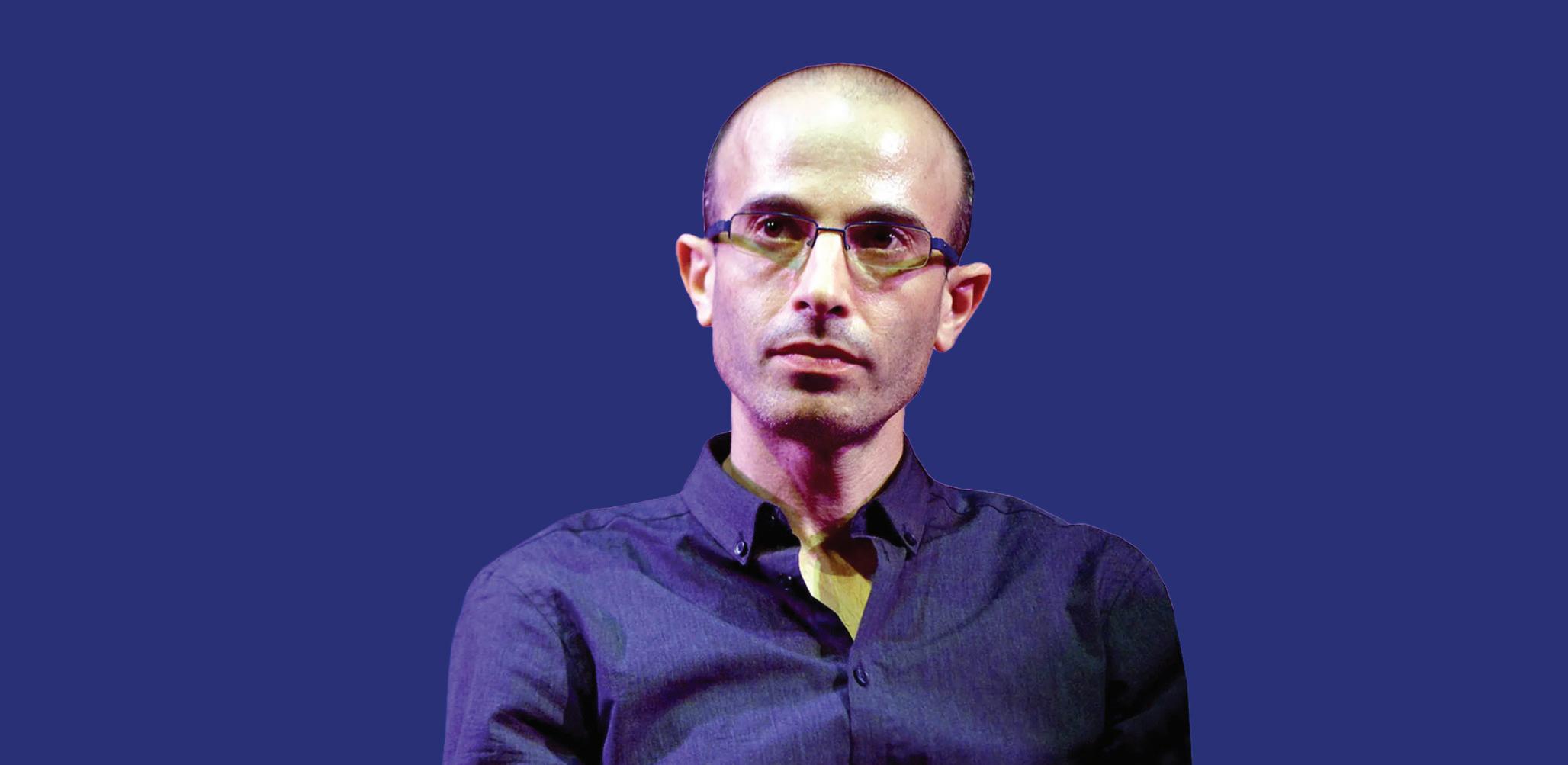
SURVIVING TECHNOLOGY



“New technologies can create either heaven or hell, but we aren’t sure which is which and this is a very dangerous situation.”
This article is based on the virtual address at the 9th Synergia Conclave by Mr Yuval Noah Harari, Professor at the Hebrew University of Jerusalem and the author of the global bestseller ‘Sapiens.’
Technological inventions can be both helpful and harmful. A knife can be used to kill people or, save their lives in surgery or to chop salad. Nuclear energy can be used to destroy cities or to produce cheap and clean electricity.
Social media pioneers were sure their inventions would liberate people, strengthen democracy and make dictatorship impossible. We now understand that social media can actually undermine democracy and lead to the rise of a new type of digital dictatorship.
Therefore, we need to ask how inventors of new technologies can ensure their creations are helpful instead of harmful
THE HUMAN-MACHINE INTERFACE
When designing new technology, a key question is how do we understand the relationship between technology and human beings? One possibility is by assuming humans are passive consumers and technology can be used to control them. In this case, the technology produced is likely to enslave people and limit human potential. Or it can be assumed that humans are active creators and technology can be used to empower them. In this case, the technology produced is more likely to
Unfortunately, when designing tools to capture and control human attention, the platforms have adopted a narrow and demeaning view of humans. The platforms discovered that the easiest way to capture and control human attention is to press the buttons of greed, fear and hatred.
liberate people and to expand the human potential. Although abstract and complicated, this idea may be explained through a few examples from human history.
One of the most important inventions in human history was also one of the simplest inventions ever. Five thousand years ago, people in ancient Mesopotamia invented writing. It was an extremely simple technology. Some Mesopotamian genius geek, perhaps inspired by seeing birds leaving their footprints on wet mud, came up with the idea of using a little stick to imprint signs on a clay tablet. This simple invention completely changed history.
Before the invention of writing, humans were unable to establish large cities, kingdoms and empires. Why? Because to maintain a kingdom, you needed to collect taxes. To tax tens of thousands of people, you had to keep records. This was something that humans just could not do in their heads; nobody could remember the tax records of an entire kingdom. Evolution adapted the human mind to remember much information
00 XXXXXXXXXXXXXXXXXXXXXXXXXX SYNERGIA CONCLAVE 2023
“Technology has certainly gotten smaller! Workers once were replaced by a robot, then a computer, then an app, then a flashdrive...

about social relations, animals, and plants, but not tax records. However, it was impossible to establish large kingdoms without somehow remembering and recording long lists of numbers; writing solved this problem. It outsourced the difficult job of recording numbers from the mind to mud.
By writing lists of numbers on clay tablets, the Mesopotamians could record their taxes, which led to the rise of the first big kingdoms and empires in history. But for the ordinary person, this was a disaster. If you were a king or a queen or a prince, you would be very happy about it all, of course. But for the ordinary person in ancient Mesopotamia, writing meant heavy taxes.
These taxes were not used to pay for education, healthcare, or welfare. They were used to pay for the king’s bodyguard, palace, and fortresses. Writing was a technology to create autocratic regimes that controlled and enslaved people.
Today, when we think about writing, the first thing that comes to our mind is not tax records; it’s probably literature and poetry. But initially, writing could not be used to write poetry.
The geeks who invented writing did it for one purpose: to record taxes. So, the script they invented had signs only for people, goods, and numbers. This was good enough to record that person X owed the king a hundred sacks of barley in tax, but it was not good enough to write a poem.
People, of course, composed poems 5,000 years ago. In fact, people probably composed poems over 50,000 years ago, but these were oral creations that people remembered in their heads.
Nobody imagined the possibility of writing poems down, so we do not have any of these ancient poems today. It took centuries until people invented more signs, eventually making it possible to start writing poems and
other things like letters, adventure stories and history books.
It is, therefore, remarkable to realize that the people who first invented writing did not understand their own invention’s potential and made it impossible to use writing for anything other than tax collection. Writing aimed to control these humans. It took centuries until writing began treating humans like active creators of poems and ideas. Only then did writing begin to empower humans and expand human potential.
Fast-forward 5,000 years to the early 21st century. We find something analogous with the rise of platforms like YouTube, Facebook, and TikTok.
When YouTube first appeared in 2005, it could easily have been bought by the old media giants like Disney, who controlled TV and the movie industry and had very deep pockets.
But the old giants were sceptical of the YouTube model. Their main difficulty with the YouTube model was this. Okay, we now have the technical ability to share millions of videos easily, but this is useless unless we have millions of videos to share, right? And who exactly would produce these millions? The old giants thought of humans mainly as passive consumers of content. Human beings were thought to be couch potatoes. This was the basic paradigm of the old media.
According to the couch potato paradigm, humans sit on a couch and passively watch content somebody else produced. Disney knew that producing a single movie or TV series cost millions. So, how could Disney pay for producing millions of new YouTube videos? And even if Disney had the money for that, where could Disney find enough professional screenwriters, actors, directors, sound technicians and so forth? In October 2006, it was not Disney but the upstart Google that bought YouTube for $1.65 billion, which seemed a crazy amount of money then; it was actually one of the best deals ever.
30 SURVIVING TECHNOLOGY
It turned out that humans are not couch potatoes after all. Given a chance, the potatoes can get up from the couch and become gifted creators. Google did not have to pay a single dollar to produce millions of YouTube videos or hire any professional screenwriters, actors or directors. The users themselves, as well as their cats and dogs, produced the blockbuster videos, which other users avidly watched.
There is a lot of criticism of social media, YouTube, Facebook, TikTok and so forth. But at least one thing should be said in favour of these platforms: they released a flood of human creativity-they turned billions of people into artists and producers.
A BRAVE NEW WORLD
There is, though, a downside. With so much new content flooding the platforms, content is now very cheap, but attention has become the most valuable asset. It costs TikTok nothing to produce its videos; the users are doing it, but how do you capture people’s attention and keep it on the platform? Unfortunately, when designing tools to capture and control human attention, the platforms have adopted a narrow and demeaning view of humans.
The platforms discovered that the easiest way to capture and control human attention is to press the buttons of greed, fear and hatred. It is a simple trick: Discover what people already crave, fear, or hate through trial and error and give them more. If there is a politician you hate, Facebook will flood you with the most outrageous conspiracy theories about him/ her, and you will find it impossible not to click on them. The result?
Instead of expanding the aesthetic and political horizons, worldview becomes increasingly limited. Social media feeds the human race with greed, fear, and hatred, which is not good for the individual, society, or human creativity. As the battle for attention intensifies, the space for creativity and exploration shrinks instead of expanding.
Another interesting example is dating apps. The biggest question in dating apps is how we understand humans. One option is that humans are consumers of mates. Based on algorithmic magic, the app suggests one mate after the other. Consumers try them out, one after another, expecting to find a better product next time.
But there is an alternative approach. We can think of humans not as consumers of mates but rather as producers of relationships. No matter who the app finds, it would still be necessary for the consumer to work hard to create a good relationship. This would probably mean changing behaviour, thought patterns, expectations, etc. No app can help change problematic behaviour and thought patterns in individual humans. A final exam ple is immersive virtual reality, which seeks to create not just a poem, video, or relationship
but an entire reality. The stakes here are much bigger, but the question is essentially the same. If we are busy developing immersive technology, are we in the business of making a product that humans will consume? We are making tools for humans to create new things.
Are we building a complete reality? Are we producing a toolkit humans will use to create all kinds of realities? The first approach can be very limited and even autocratic. People will find themselves trapped inside a reality that somebody else created and controls, and they will see themselves unable to change it. It will be a bit like the tax records of ancient Mesopotamia.
The second approach can be much more liberating and empowering, like being given an empty clay tablet and a little stick, which you can use to write any poem you want.
No matter what immersive technology we invent, it won’t work without the body. Consider a person who stays all day in the room, playing games, developing relationships online, and not venturing out even to eat.
Is this person locked in the room, suffering from some new social dysfunction? Is this person actually liberated from the physical prison of houses, cars, and organic bodies and free to roam a much vaster and more exciting world of unlimited possibilities? It depends on how you understand what humans are. This is very important because you are reshaping the world.
For most of history, there was a division of labour between philosophers and engineers; philosophers dreamt about all kinds of utopias, and then engineers explained why they could not be realized.
Now, the situation is almost the reverse; engineers are dreaming up all kinds of fantastic tools, but philosophers are not sure what to do with them.
The new technologies can create either heaven or hell, but we are not sure which is which and this is a very dangerous situation.
If we do not understand the new heaven fast enough, we might easily be misled by naive utopia. And if we don’t understand the new hell fast enough, we might find ourselves entrapped there with no way out.
Indeed, the borderline between heaven and hell is itself disputed, and one might easily be transformed into the other. An immersive virtual world might be much more engaging and addictive than the old-fashioned physical reality. Would losing all interest in the physical reality be a good or a bad thing?

Hopefully, human beings will make wise choices about how to use this power. As a first step, they must take a more expansive and courageous view of the human potential and view humans not as passive consumers who should be controlled but rather as active creators who should be empowered.
31 SURVIVING TECHNOLOGY

AI SOLVING PROTEIN STRUCTURES?


AI and ML are rapidly deciphering protein structures, paving the way for healthcare advances and more.
Artificial intelligence (AI) is helping biology solve one of its major challenges - deciphering how proteins curl up into 3D shapes that enable them to perform biological tasks. The human body relies on thousands of proteins, each made up of chains of amino acids that construct complex 3D structures through various pushes and pulls.
Grasping the connection between a protein’s amino acid sequence and its structure is a long-running issue. Solving this has myriad scientific consequences such as helping develop new drugs and vaccines as well as leading to a better understanding of certain diseases. RESEARCH TEAM SYNERGIA FOUNDATION
Google DeepMind’s AI program has predicted the 3D structure of almost all known proteins. Last year, DeepMind announced that Alphafold has successfully unravelled the structure of more than 200 million proteins - the entire gamut of known proteins.
WHY ARE PROTEIN STRUCTURES IMPORTANT?
Proteins are considered the building blocks of life; essential molecules present in all living beings. They perform numerous functions in the body including serving as structural units, transporting molecules, and catalysing chemical reactions as enzymes.
Not only are they integral participants in our bodies’ structure and functions but they are also used to make products like medications and detergents.
Each protein has a unique 3D structure in the body, shaped by amino acid chains that fold into the structure. These 3D structures are essential to their function.
Grasping the connection between a protein’s amino acid sequence and its structure (let alone function) is a long-running issue.
Solving this has myriad scientific consequences such as helping develop new drugs and vaccines as well as leading to a better understanding of certain diseases.
PREDICTING PROTEIN STRUCTURES
Over decades, scientists tried to predict protein structures through elaborate and costly methods like X-ray crystallography or electron microscopy. With digital advances, virtually-built models have revealed how amino acid chains fold to create the final 3D structure of proteins.
Since AlphaFold was released in 2020, more than half a million researchers in different parts of the globe have used the AI tool to deduce protein structures.
The application’s deep learning algorithm learned to predict 3D protein structures from amino acid sequenc-
TECHNOLOGY
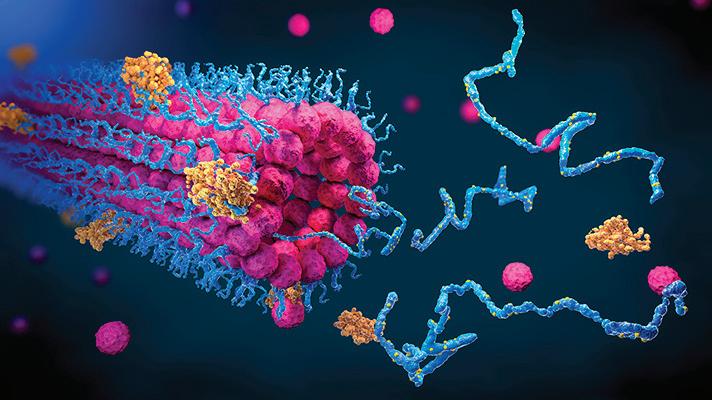
es after training on around 100,000 protein structures that had already been discovered by scientists.
It is worth pointing out that protein structures are complex and comprise several atoms linked by chemical bonds. The main atoms that determine its 3D shape constitute the “backbone” or spine of the protein. The backbone can be further segmented into atom triplets. Each triplet of the backbone has a particular atom type and pattern of bonds.
This triplet pattern can be used to develop machine learning (ML) algorithms based on differential geometry and probability concepts. The triplets are modelled as “frames” - a mathematical term for rigid bodies with a particular 3D position and rotation. Based on frames, the ML algorithm then learns how to move around each frame to build a protein backbone. In this way, it can construct an existing protein.
A RANGE OF APPLICATIONS
The human body relies on thousands of different proteins, each with a distinct 3D shape. Determining protein shapes helps medical researchers design drugs that can lodge within proteins and successfully bind to them.
Deep learning is predicting structures that will bind to target molecules for various medical treatments ranging from personalized cancer treatments to synthetic antibodies that could neutralize SARS-CoV-2, the COVID-19 virus.
Using structure predictions, scientists can also understand the causes of diseases better by determining if particular protein variants are linked to diseases. Deciphering the structures of proteins linked to diseases enables researchers to devise drugs that can activate or substitute malfunctioning proteins or inhibit proteins
that are wreaking havoc. For instance, AlphaFold’s predicted protein structures are being used to engineer drugs to treat tropical diseases. The database has also been relied on to develop a new vaccine for Malaria.
FUTURE POSSIBILITIES
Deciphered protein structures could lead to more focused methods of healthcare and disease treatment as they assist scientists design drugs. Further, decoded structures for existing plant, bacteria, and animal proteins could open up solutions for long-running challenges like food insecurity.
The significant benefit of such technology is that it can predict protein structures from their amino acid sequence without requiring mathematical modelling or delving into molecular physics.
AI and ML could be used to predict new protein structures that have not been found in nature, helping create synthetic proteins that contribute to processes like drug design and gene therapy. There are two main steps involved in making synthetic proteins: generation and prediction. While predictive tools like AlphaFold decipher the 3D structure of a protein, generative AI tools can create new protein structures. The idea is to generalize based on known structures to build new protein models that have not been come across. MIT’s computer science and AI lab has come up with “FrameDiff” - a generative AI tool that devises new protein structures through frames that reflect inherent properties of protein structures.
In addition to health solutions, protein structure predictions could also contribute to solutions for environmental challenges like plastic pollution. Synthesizing proteins of a particular structure could help make fast-acting enzymes that break down plastic waste and recycle notorious single-use plastics.
33 AI IN PROTEIN STRUCTURE ANALYSIS
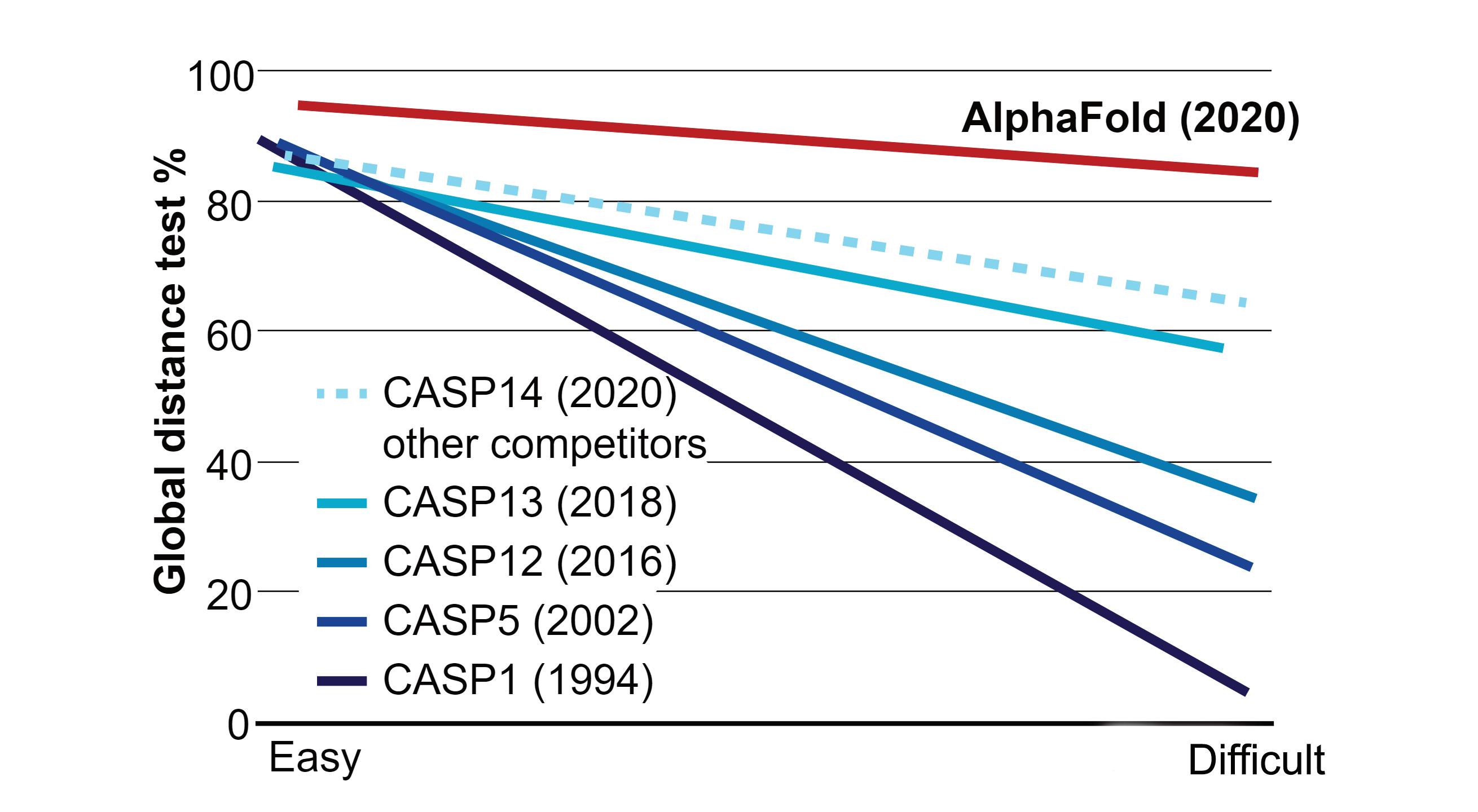
Lastly, deep learning could not just help researchers understand protein shapes but also how proteins interact inside a living system. In other words, models could not just predict amino acid sequences that would produce a protein shape but also how they will behave in a biological system or organism and interact with other molecules within it.
They could also pave the way to cracking other molecules’ structures like RNA. In such ways, these tools could help scientists understand how life functions at a micro-level.
WHAT ARE THE RISKS AND LIMITATIONS?
One of the key challenges in structural biology is that proteins in biological systems are constantly changing shape. Both experimental and computational methods reveal the average protein structure. Researchers are keen to determine a range of shapes that a protein can take and which ones it will adopt in a cell and under specific conditions. As mentioned above, AI models could potentially play a role in this task.
Another challenge is to find functions for the new molecule structures: as AI churns out numerous new protein structures, researchers will have to find ways to link the structures with their functions. Deep learning seems poised to play a role in that too: Google research scientists have come up with an ML tool that predicts the function of a protein. However, AI’s ability to predict function has a long way to go; it will have to rely on multiple kinds of data with protein structure being just one of the factors.
Further, AI algorithms’ exact methods are largely shrouded in mystery. AI tools like artificial neural networks (algorithms named after the brain wiring) use
vast datasets to glean abstract rules that connect inputs to known outputs. Through this, they can perform tasks like predicting the amino acid sequence needed to build a known protein.
However, researchers don’t understand exactly how algorithms develop their rules based on the data and predict the shape the protein will take. The reasoning is not based on mathematical functions and it is also different from the natural, mechanical rules that guide proteins in living systems.
Lastly, the breakthroughs in structural biology cannot be credited to AI alone. Technologies like X-ray crystallography, nuclear magnetic resonance (NMR) spectroscopy, and cryogenic electron microscopy (cryo-EM) continue to play a critical role; AI algorithms train on giant datasets of structures produced through these experimental methods. Moreover, these sophisticated technologies are also used to confirm AI-predicted structures.
Assessment
Deep learning algorithms are rapidly cracking protein structures, opening up a range of possibilities. These include more targeted healthcare treatments as well as a better understanding of disease and micro-level biological functioning. It could also pave the way towards engineering new proteins and devising solutions for key problems like degrading plastic waste.
Confirming the accuracy of predicted structures remains an issue in this emerging space and conventional experimental methods continue to play a key role, even to train deep learning tools.
OF PROTEIN STRUCTURE PREDICTION
DIFFICULTY
34 AI IN PROTEIN STRUCTURE ANALYSIS
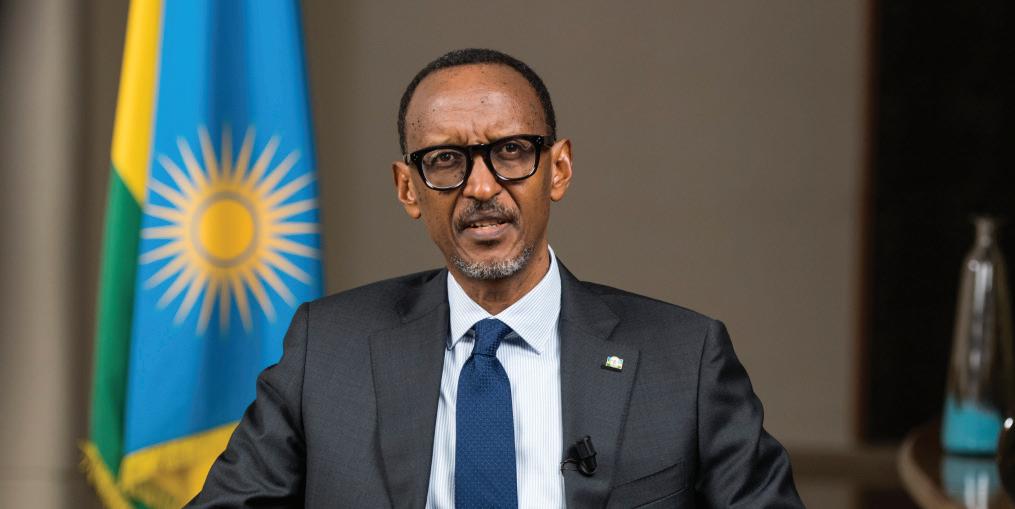


RWANDA – EAST AFRICAN ‘SMART POWER’
Strong political leadership has led Rwanda through a period of significant economic and social progress.
Rwanda is a small, landlocked country in East Africa with a population exceeding 13 million people. The country is characterized by its hilly and fertile terrain. Despite its size, Rwanda has exerted significant influence over the region. Rwanda’s landscape and population size contrast with its significant regional influence.
President of v, has been in office since April 22, 2000, and is set to seek re-election for a fourth term in 2024. Kagame also holds the position of Chairperson of the AU Development Agency New Partnership for Africa’s Development (AUDA-NEPAD) and is an African Union Leader. Rwanda has been in the spotlight for maintaining political stability since the 1994 genocide against the Tutsi.
The country’s efforts to uphold stability and governance have garnered attention globally.
EMERGING REGIONAL POWER
Strong Leadership by President Paul Kagame, has led Rwanda through a period of significant economic and social progress. His leadership and vision have been key factors in Rwanda’s development. Recent political developments in Rwanda indicate a continuation of the regime’s focus on stability and economic growth.
Rwanda’s Country Development Cooperation Strategy (CDCS) for the period 2020-2025 focuses on strengthening human capital, developing a robust private sector, and establishing accountable institutions to advance selfreliance. The strategy aims to support Rwanda’s aspirations to become an upper-middle-income country by 2035
Economic Growth has been significant in recent years, with an average annual GDP growth rate of 7.2% from 2016 to 2021. This growth has been driven by a combination of factors, including a stable political environment, a focus on agriculture and tourism, and investments in infrastructure and human capital.
Rich minerals and their exploration took place between 1968 and 2020. Using geological mapping, airborne surveys and geochemistry, Rwanda was found to have deposits of wolfram, cassiterite, gold, colombo-tantalite, lithium, beryl, rare earth minerals and various gemstones.
Investment in Infrastructure including roads, bridges, and airports, have helped to improve connectivity and facilitate trade. This has been a key driver of economic growth. Agriculture is a major sector in Rwanda, accounting for around 30% of GDP and employing around 70% of the workforce. Rwanda has a favourable
RESEARCH TEAM
GLOBAL SCAN
SYNERGIA FOUNDATION
climate for agriculture, and the government has implemented policies to support the sector, including the provision of inputs and extension services.
Tourism in Rwanda is flourishing, known for its natural beauty and wildlife, including the famous mountain gorillas.
The country has been investing in tourism infrastructure and promoting the sector as a way to generate revenue and create jobs. Tourism has been a significant contributor to Rwanda’s economic growth.
PERSISTENT CHALLENGES
Landlocked Geography: Being landlocked, Rwanda faces high transportation costs for imports and exports, which are among the highest globally. This geographical
Human Rights Concerns: Rwanda faces issues related to human rights, including threats, harassment, surveillance, and coercion. Citizens living overseas have reported experiencing digital threats and spyware attacks affecting their families.
Environmental Degradation: Poaching, deforestation, and unsustainable human activities like rampant tree cutting for timber and charcoal production pose significant challenges to Rwanda’s environment and wildlife. Addressing the issue is crucial for environmental conservation and sustainable development in the country.
Inclusive Growth: Rwanda struggles with maintaining inclusive growth, as the momentum in poverty reduction has weakened in recent years, posing a challenge to sustainable development.
Cost of Electricity: The cost of electricity in Rwanda is a significant challenge, affecting businesses and households and hindering economic growth
Government of Rwanda addressing the challenges faced by the country through various strategies and initiatives. Rwanda is actively involved in supporting security sector reform in the Central African Republic (CAR), which includes equipping, training, and deploying units of the Central African army and security forces. This initiative aims to enhance security and stability in CAR, contributing to addressing regional challenges.
The government’s focus on improving the quality of infrastructure, including water and electricity, is crucial for addressing challenges such as energy costs and enhancing the overall development landscape in Rwanda.
This approach aligns with Rwanda’s goal of self-reliance and developing robust capabilities within African countries. By actively engaging in security sector reform, prioritizing infrastructure development, and fostering economic partnerships, the government of Rwanda is working towards overcoming challenges and advancing its development agenda to ensure sustainable growth and prosperity for its citizens.
Rwanda’s Country Development Cooperation Strategy (CDCS) for the period 2020-2025 focuses on strengthening human capital, developing a robust private sector, and establishing accountable institutions to advance self-reliance. The strategy aims to support Rwanda’s aspirations to become an upper-middle-income country by 2035 and a high-income country by 2050.
The Key priorities of the CDCS include strengthening human capital and it emphasizes investing in education, health, and social protection to improve the well-being of Rwandans and support economic growth. The CDCS aims to promote entrepreneurship, innovation, and investment to diversify the economy and create jobs. The strategy also focuses on improving governance, transparency, and accountability in public institutions to enhance the country’s ability to deliver services and manage resources effectively.
The CDCS includes investments in infrastructure projects, such as roads, energy, and water, to support economic growth and improve the quality of life for Rwandans. The strategy highlights the importance of protecting the environment and promoting sustainable practices to ensure long-term economic growth and development. Also, the CDCS aims to address inequalities and promote social inclusion by focusing on marginalized groups, such as women and youth, through targeted interventions and programs.
AN EMERGING REGIONAL POWER
Rwanda’s growing role in the Central African Republic (CAR) is marked by several key aspects. Rwanda’s role is part of its broader military diplomacy strategy, which aims to forge economic partnerships with countries where it maintains troops and to develop more robust capabilities within African countries.
Economic Investments in mining and agriculture projects in CAR, securing mining concessions and land for agricultural projects. Security Sector Reform is supporting security sector reform in CAR, including equipping, training, and deploying units of the Central African army and security forces. Military Contribution of Rwanda is the largest to the UN peacekeeping mission in CAR (MINUSCA) and has been involved in the country since 2013, with over 2,000 soldiers and police officers deployed by 2022.
Rwanda’s engagement with organizations like the OECD underscores its proactive approach to strategic collaborations aimed at enhancing its influence, fostering development, and promoting sustainable growth within the region. Rwanda’s involvement in the CAR continues to be a subject of debate and scrutiny within the international community, reflecting both support for its efforts and concerns about its methods and impact on regional dynamics.
China’s interest in Rwanda in the present context is driven by a combination of political, strategic, and aid-policy interests. The engagement between China and Rwanda is multifaceted. China’s engagement with
36 RWANDA – EAST AFRICAN ‘SMART POWER’
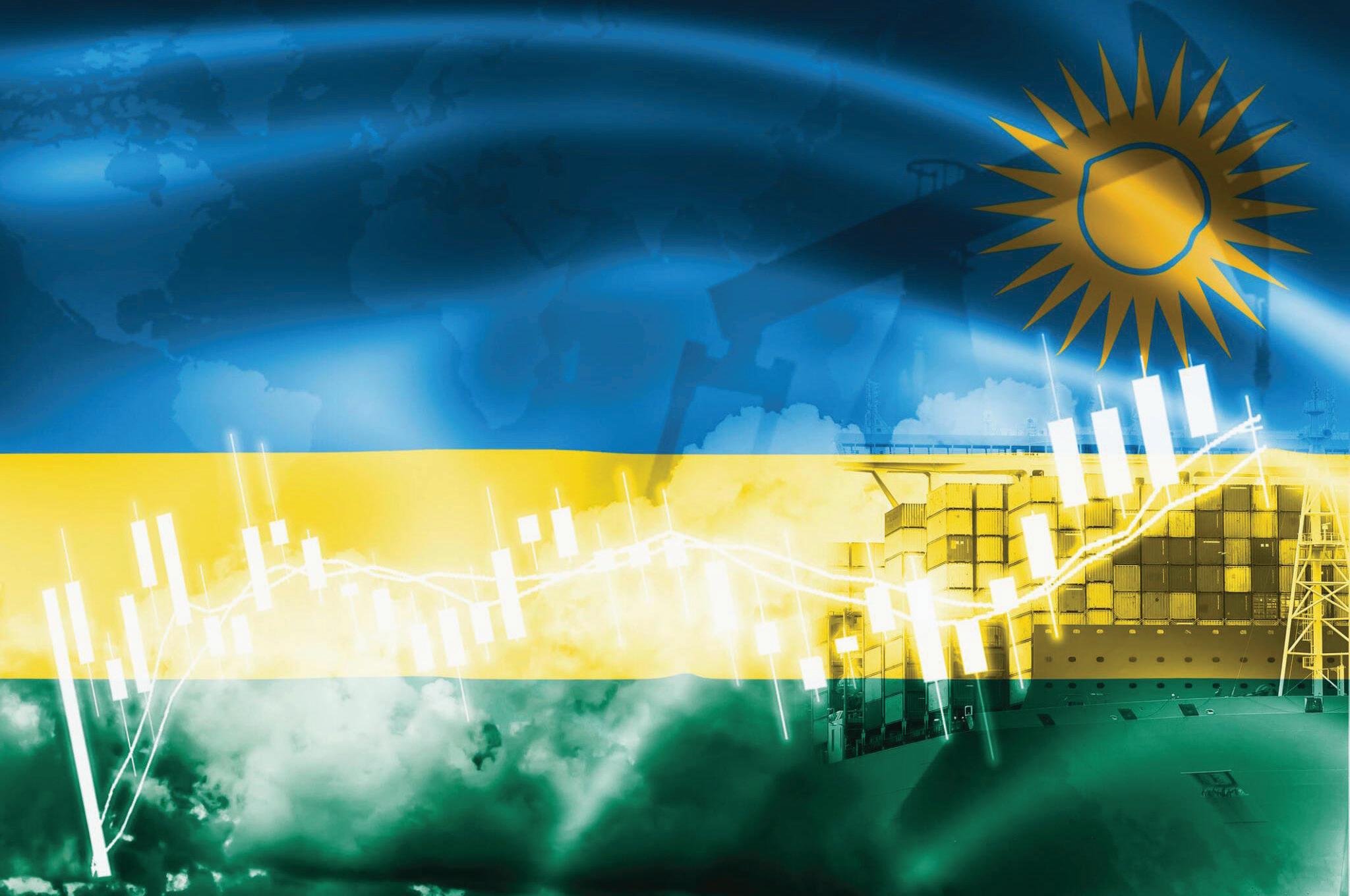
Rwanda is influenced by political and strategic considerations, aiming to strengthen diplomatic ties and expand its influence in the region.
Despite Rwanda being a landlocked country, China has emerged as a significant investor in the country including infrastructure development. China’s investments in Rwanda are part of its broader Belt and Road Initiative (BRI), which aims to enhance connectivity and promote economic cooperation between China and countries along the BRI routes. This initiative has facilitated Chinese investments in Rwandan infrastructure projects, such as road construction.
RWANDA- INDIA RELATIONS
The historical bilateral relationship between India and Rwanda is multifaceted, encompassing aspects of mutual respect, development cooperation, economic ties, cultural exchanges and strategic partnerships that have contributed to the strengthening of ties between the two nations over the years.
India and Rwanda share a history of friendly relations dating back to the pre-colonial era, with both countries having a tradition of non-alignment and mutual respect. SIn bringing the two countries together, Synergia Foundation played a role by spearheading relief assistance to genocide victims in 1994. India is represented in Rwanda through its High Commission in Kigali, which opened on 15 August 2018.
Rwanda officially opened its Mission in New Delhi in 1999 and appointed its first resident Ambassador in 2001. Both countries have been supporting regional integration initiatives, such as the East African Community. The bilateral relationship between India and Rwanda has been characterized by development cooperation in various sectors, including agriculture, healthcare, education, and technology transfer. Economic ties between India and Rwanda have grown significantly, with trade relations expanding in areas such as pharmaceuticals,
machinery, textiles, and information technology. Indian companies have also invested in Rwanda’s infrastructure and energy sectors..
The high-level visits and diplomatic engagements have played a crucial role in strengthening India-Rwanda relations. Notable visit of the Foreign Minister of Rwanda’s to India in 2023, further solidified ties between the two countries.
CHALLENGES & OPPORTUNITIES
Challenges impeding Potential of India-Rwanda Bilateral Relations
Limited Economic Engagements: One of the challenges facing India-Rwanda bilateral relations is the limited economic engagement between the two countries, with trade volumes not reaching their full potential. This hinders the exploration of mutual economic opportunities and inhibits the growth of bilateral trade and investment. Both countries can focus on enhancing trade promotion activities, organizing trade fairs, business delegations, and sector-specific events to facilitate greater interaction between Indian and Rwandan businesses.
Poor Connectivity: Efforts to improve connectivity through direct flights or enhanced transportation links can help overcome the geographical distance barrier. This would facilitate easier travel for business representatives and tourists, fostering more frequent interactions and collaborations.
Lack of Awareness: There is a lack of awareness about each other’s markets, potential sectors for collaboration, and investment opportunities, which impede the development of robust economic ties and hinder the exploration of synergies in various fields. Conducting awareness campaigns, business seminars, and cultural exchanges can help increase understanding about each other’s markets, investment climate and potential
37 RWANDA – EAST AFRICAN ‘SMART POWER’
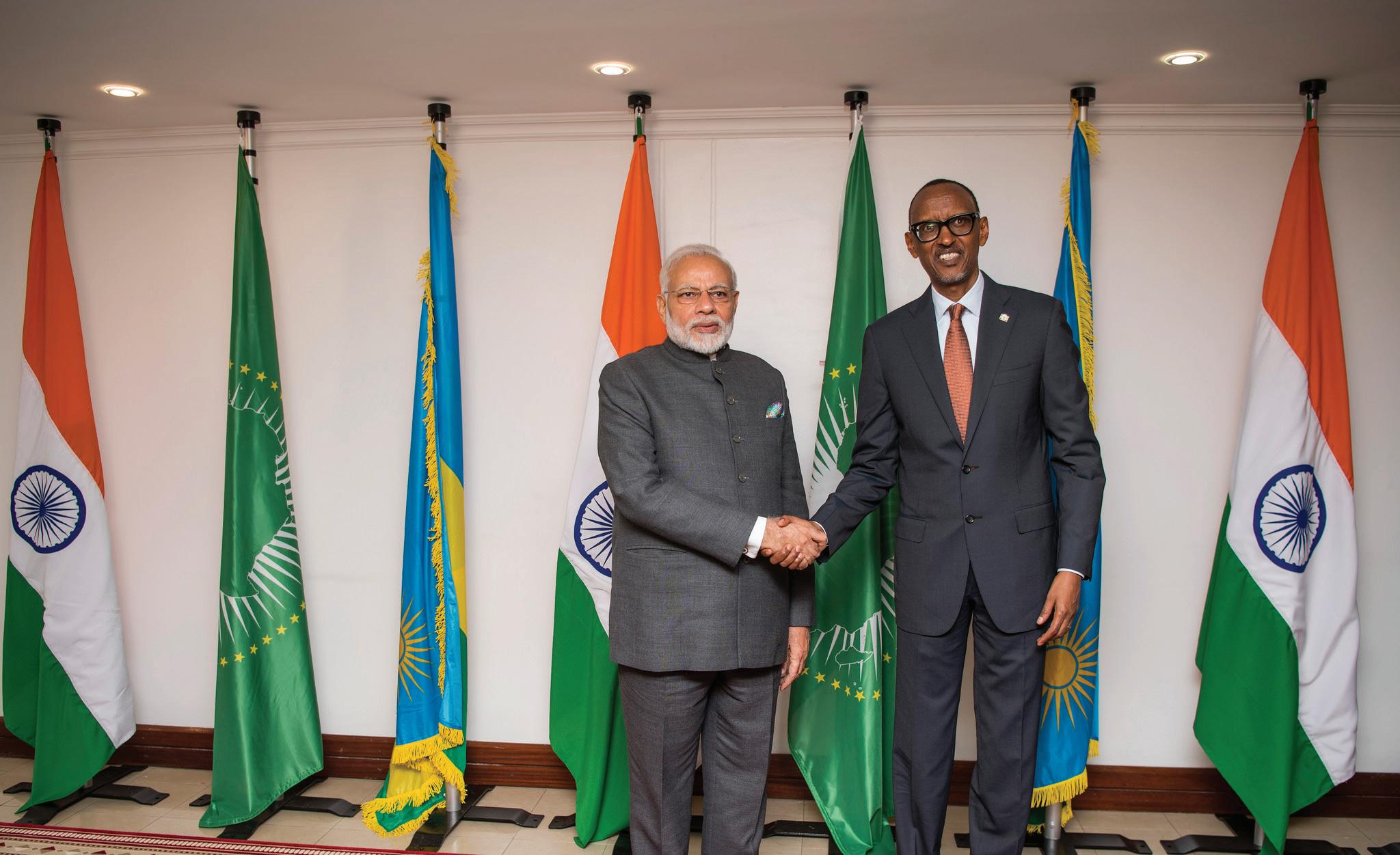
areas for cooperation. This can bridge the information gap and encourage more bilateral engagements
Opportunities for Enhancing Bilateral Relations: India and Rwanda
Strategic Partnerships: India and Rwanda can deepen their strategic partnerships by working together on regional and global issues, supporting each other in international forums like the United Nations. This collaboration can enhance cooperation on issues of mutual interest, such as peacekeeping and climate change.
Expanding Trade and Investment: India and Rwanda can explore opportunities to expand trade and investment in various sectors, such as pharmaceuticals, machinery, textiles, and information technology, to enhance economic cooperation and mutual benefits.
Technology Transfer and Skill Development: India’s expertise in emerging technologies and skill development for the youth can be of great help to Rwanda, addressing urgent needs like cyber security, AI, Quantum, Drones, Bio-technology and the related skills shortage. The priority areas for AI efforts in economic impact, social development, inclusive growth positions India as a solution provider. Both countries can work together to implement Digital Public Infrastructure (DPI), emphasizing privacy, data security, and intellectual property protection. This collaboration can contribute to Rwanda’s sustainable development and economic growth
Infrastructure Development: India can support Rwanda’s infrastructure development by providing technical assistance, training and investment. This collaboration can help address challenges such as energy costs and enhance Rwanda’s overall development landscape.
Collaboration in Agriculture and Healthcare: India’s expertise in agriculture and healthcare can be leveraged to support Rwanda’s development efforts in these sectors.
This collaboration can lead to knowledge sharing, technology transfer and capacity building, benefiting both countries. The Indian pharmaceutical industry can be investing joint ventures to meet Rwanda’s health care segment needs.
Cultural Exchanges: Enhancing cultural exchanges between India and Rwanda can foster a deeper understanding of each other’s cultures and promote people-to-people ties. Initiatives like yoga sessions, film festivals and educational scholarships can contribute to this goal.
These opportunities highlight the potential for India and Rwanda to further strengthen their bilateral relations through expanded economic cooperation, strategic partnerships and joint initiatives in various sectors.
Key Points
Rwanda is exerting significant influence over the East African region, focus being self-reliance and developing robust capabilities within region.
India -Rwanda relations is multifaceted encompassing economic and strategic partnership.
India and Rwanda must expand trade and investment in emerging technologies, pharmaceuticals and many such sectors.
38 RWANDA – EAST AFRICAN ‘SMART POWER’

A FUTURE ECONOMIC POWERHOUSE


A combination of warming conditions and increased investment in the region has poised the Arctic as the new geopolitical tussle ground.

Suchitra Padmanabhan is the Policy Research Associate at Synergia Foundation and has Post Graduate Degree in Social Policy & Planning from the London School of Economics.
The Arctic stands out for both its diversity and potential, encompassing developed urban centers, subsistence communities, international educational institutions, and extensive wilderness that has been utilized by its inhabitants for generations.
While hunting and fishing have historically been pivotal to the region’s economy, the Arctic now hosts significant industrial operations, cutting-edge technology startups, and communities proudly preserving their traditional lifestyles.
The Arctic has transcended its former isolation and is now a integral part of the global economy, actively participating on the international stage. Like the rest of the world, the region is experiencing the impacts of major trends such as changing demographics, urbanization, and climate change. However, the Arctic possesses the tools and capabilities to effectively navigate and address these global trends
BLUE ECONOMY SUPPORTS BUSINESS
The Arctic has emerged and is taking its place on the international stage as an active member of the global economy. Climatic changes in the Arctic region are affecting the business ecosystems of not only Europe and
As the vaway, a huge new geopolitical area is being formed on the Earth. From a business perspective, the expectations with regard to the area are at least as high; according to estimates by Guggenheim Partners, around 900 projects are planned in Arctic areas, worth in total approximately a trillion dollars.
Asia, but also North America. The area has enormous business potential, but its realization requires major investments and viable communications links.
From a business perspective, the expectations with regard to the area are at least as high; according to estimates by Guggenheim Partners, around 900 projects are planned in Arctic areas, worth in total approximately a trillion dollars.
The Arctic region offers immense business opportunities for building infrastructure, for roads, as well as for the mining and energy industry. The fossil energy resources, oil and gas, as well as renewable energies, enable the creation of different kinds of business operations and models.
Other notable opportunities include sustainably harvested food to feed a growing world, renewable energy to power up economic development and the raw materials needed for green transformation.
ECONOMICS

In order to fulfill these ambitions, the Arctic region needs investments in infrastructure. Infrastructure plays a dual role in the region, serving not only to foster business growth and employment opportunities but also as a crucial component for climate mitigation and security.
This is particularly significant in a region where the rate of global warming is four times higher than the global average.
The Arctic Economic Council (AEC) is an independent business membership organisation that facilitates partnerships, develops policies, and promotes sustainable economic development in the Arctic.
The members of AEC are both Arctic and non-Arctic companies, the smallest are SMEs and entrepreneurs and the largest are multinationals and other business organisations.
The Arctic Economic Council was created following the Arctic Council’s acknowledgment of the key role business plays in the development of the Arctic.
One of the challenges to attract investments to the region is the lack of awareness by investors of the immense opportunities combined with some organizations and outside policy makers wanting to eliminate activity and development in the name of environmental protection
INVESTMENT REQUIREMENTS
Unlocking the immense potential in the Arctic necessitates the establishment of a robust infrastructure that includes roads and energy solutions while respecting the delicate natural ecosystem. A well-functioning infrastructure is essential for enabling both living and working in the region.
Critical to Arctic investments is the provision of secure high-speed internet access. Presently, the area relies on satellite-based internet, which is neither cost-effective nor speedy.
Given the vast size of the region, secure high-speed internet access is a prerequisite for effective communication.
In today’s market, few industries can operate without network access, and businesses in the Arctic are no exception. The current reliance on satellite-based internet proves to be neither cost-effective nor efficient for transmitting information.
Reliable remote connections are vital not only for diverse employment opportunities but also for offering essential services in remote areas. Online healthcare services, such as doctor appointments, have become feasible, and there is a growing demand for remote training and consultancy services.
Recognizing the importance of connectivity, the Arctic Connect has gained political significance and is on the agenda of the Arctic Council.
Supported by Germany, Finland, Sweden, Norway, Russia, Japan, and China, the Ministries of Transport and Communications from these countries have engaged in official-level negotiations. Cinia Oy serves as the driving force behind the initiative, spearheading efforts at the official level and involving commercial entities.
INNOVATIVE BUSINESSES IN THE ARCTIC
Innovation within the tourism sector showcases some of the most distinctive hotels that integrate seamlessly with the Arctic landscape and nature, such as Igloo Hotel, TreeHotel, and SnowHotel. Credit: Tree-
40 A FUTURE ECONOMIC POWERHOUSE
Hotel. The report “Innovative Businesses in the Arctic: Many Ways to Success,” crafted by researchers as part of the Business Index North project, reshapes the conventional image of business opportunities in the Arctic, moving beyond mining, pulp and paper, oil and gas industries, fisheries, and tourism.
Companies in the region leverage unique resources to create value-added products, with drink and food manufacturers emphasizing the natural purity and cleanliness of raw materials sourced from the Arctic.
The report spotlights businesses in tourism, hightech, and the car-testing industry, where the Arctic provides a distinctive setting with its infrastructure, cold climate, and privacy, particularly beneficial for car-testing companies.
Highlighted businesses exhibit environmental expertise and high-quality manufacturing. A new generation of Arctic companies addresses the needs of the aging population by integrating health and IT technologies with the latest re search.
Examples include Bioactive Bone Substitutes (producer of bioactive bone-graft substitute implants) and Optomed (developer of an eye disease screening device).
Arctic innovation clusters encompass circular and bio-economy, space industry, server technology, car-testing, and smart-construction clusters, among others.
Investors foresee over USD $1 trillion heading towards Arctic development in the near future, primarily targeting infrastructure projects such as roads, ports, airports, hotels, housing, hospitals, schools, and more. Guggenheim Partners estimates that over USD $500 billion in infrastructure projects are already in the planning stages.
This combination of warming conditions and increased investment is not only transforming the Arctic physically but also altering humanity’s perception of the region.
No longer seen as remote and inaccessible, dominated by nature and impenetrable ice, the Arctic is rapidly becoming a destination for tourists, an aquaculture hub, a real estate opportunity, an Internet cable route, a shipping shortcut, and more.
Much of the Arctic’s economy, including tourism, is intertwined with its oceans and coasts. Iceland experienced a staggering 400% increase in visitors over the past decade, while Svalbard’s tourism doubled over the same period.

Collaborative efforts through these clusters capitalize on access to cold water, snow, biomass, fish, space, darkness, and silence, as well as renewable energy.
The Arctic’s highly developed technical and knowledge infrastructures, including a space observatory, serve as crucial factors for building successful companies that add value to products and services.
A WAVE OF INVESTMENT
While the choice of environmentally unfriendly coal for the first freight to traverse the Northwest Passage may seem ironic, this voyage underscores the opening of the region for development due to warming Arctic waters.
The Northwest Passage becomes shorter and more cost-effective during lighter-than-usual ice conditions, with manageable and insurable risks.
Owners of vessels like the Nordic Orion recognize the opportunity to carry a 25% larger load while saving USD $80,000 in fuel costs.
These factors, along with others, are shaping the Arctic economy with a focus on marine, maritime, and coastal development — known as the “Blue Economy.”
The Arctic’s Blue Economy sectors, such as Norway’s salmon aquaculture industry, are also witnessing significant growth and accompanying challenges.
Norway’s aquaculture industry in Arctic coastal waters grew by 500% from 1997 to 2016.
At present, the Arctic region contributes 10% of the global oil and 25% of the world’s natural gas, primarily derived from onshore deposits.
It is estimated to harbor 22% of the yet-to-be-discovered reserves beneath the Arctic Ocean. Discussions on economic development in the Arctic often revolve around these sectors.
GEOPOLITICS PLAY OUT
Russia’s recent announcement to suspend funding to the Arctic Council may not be as alarming as it initially sounds.
The Arctic Council’s activities heavily rely on inkind and financial contributions from entities directly involved in specific projects.
For instance, the Aleut International Association, Finland, and the United States may contribute to a waste management project, while Iceland, Canada, and the Saami Council might support a gender equality initiative. Each project’s expertise and funding come from the participating institutions.
Experts suggest that Russia’s decision targets the suspension of annual funding to the Arctic Council Secretariat (ACS), responsible for administrative and com-
41 A FUTURE ECONOMIC POWERHOUSE
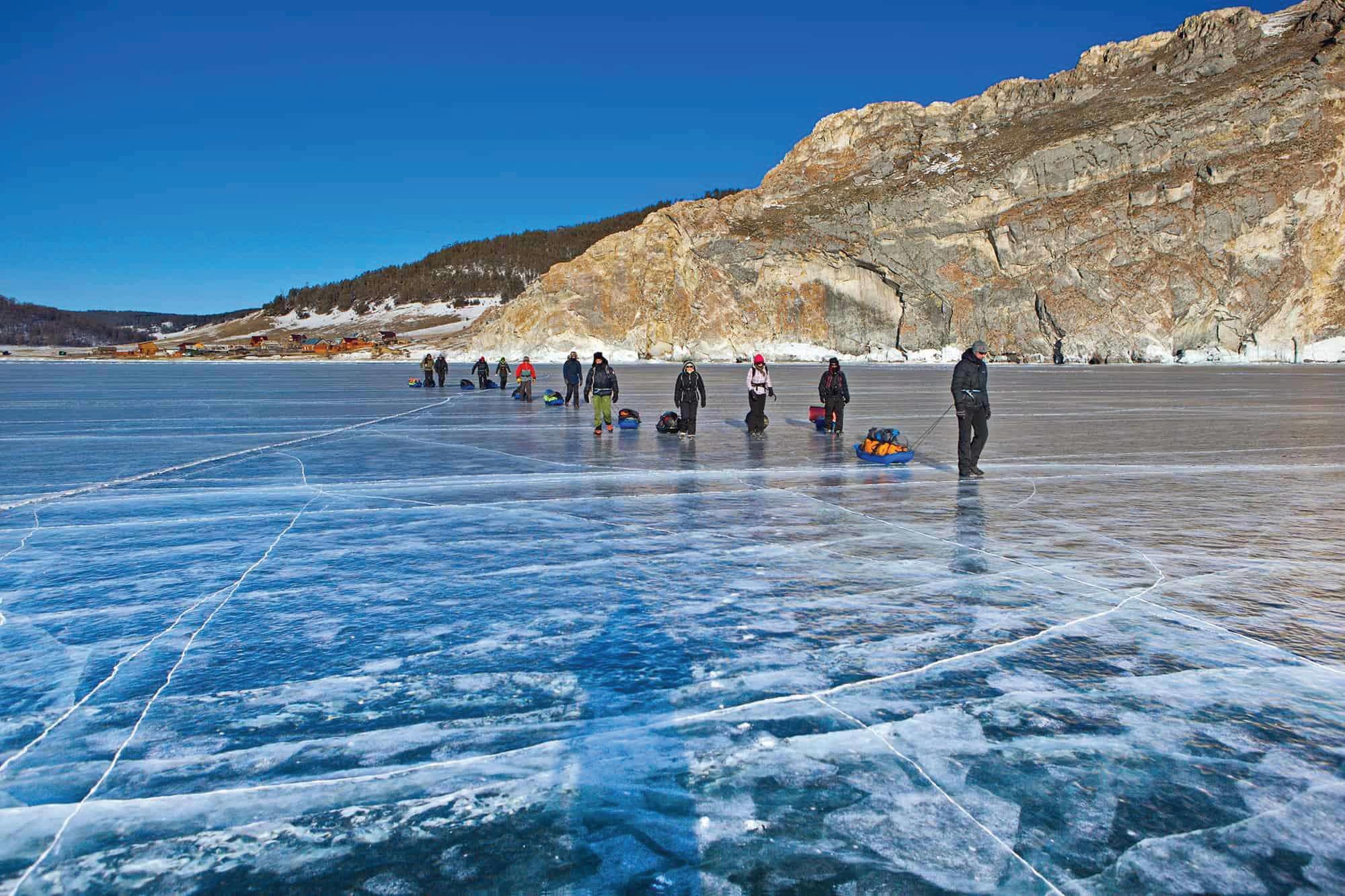
munication support. While the ACS will need to make adjustments due to reduced funding, it’s worth noting that over 40% of its budget is provided by its host country, Norway, with the remainder shared among the other seven Arctic states.
Russia’s reduction in funding by slightly more than 8% of the ACS’s annual budget signals a desire for substantial cooperation within the Arctic Council, surpassing symbolic gestures.
In contrast to other multilateral institutions with severed ties, this decision underscores a commitment to genuine cooperation.
The Arctic Council stands at a governance crossroads, remaining functional but encountering challenges. Despite efforts to rejuvenate working-level cooperation, progress has been variable. There is an urgent need to enhance effectiveness in addressing critical issues such as climate change, supporting resilient Arctic communities, addressing infrastructure demands, optimizing resource utilization, and managing the growing risk of disasters.
Russia’s announcement acts as a wake-up call, emphasizing that the status quo is unsustainable. While the Arctic Council retains the potential to play a central role in circumpolar cooperation, concerted efforts are required to overcome existing challenges and enable effective responses to the urgent issues confronting the region and the world.
There are other friction points too. The rivalry between the United States and China is extending into the Arctic region, which has experienced significant warming in recent years. This competition is particularly pro-
nounced in the Arctic-Atlantic linkage zone, home to the five Nordic countries.
The United States is wary of China’s efforts to establish a presence or strengthen its influence in the Arctic and will strive to prevent China’s involvement in the region.
Meanwhile, China views the Nordic countries as integral to its “Polar Silk Road,” a key component of the Belt and Road initiative facilitating shipping, scientific exploration, and strategic positioning. The “Polar Silk Road” holds immense importance for China’s efforts to enhance connectivity between Asia and Europe.
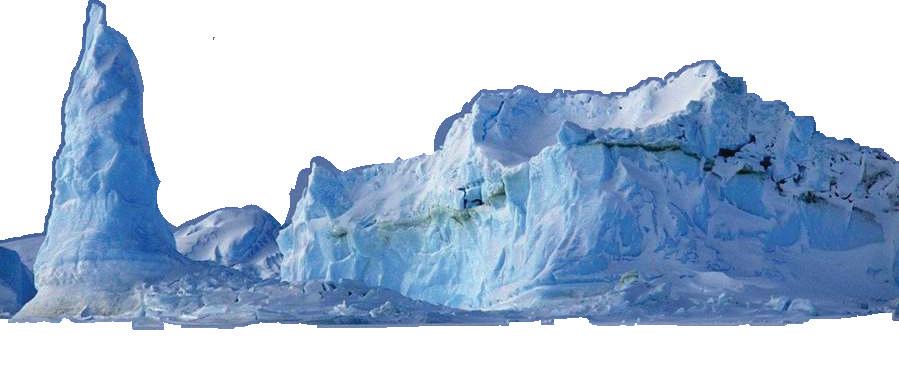
Assessment
Arctic has risen to prominence and is now asserting its presence on the world stage. This region is no longer secluded or isolated; instead, it has become an integral part of the global economy. As prospects for commerce expand, the blue economy truly stands out as the business zone of the future
An inevitable fall out of this new commerce has been geopolitical rivalry. Russia has stated its intent as a keen participant given its geographic proximity. China too has stated its intentions to get involved in negotiations and business agreements raising the heat in the Arctic climate. Growing rivalries in the region are displayed by the US-China competitiveness over the blue ocean economy.
42 A FUTURE ECONOMIC POWERHOUSE
BAIKAL LAKE IN WINTER, RUSSIA



KYASANUR FOREST DISEASE(KFD): INDIAN VIRAL HEMORRHAGIC FEVER
An outbreak of KFD in monkeys (Epizootic) can lead to a spillover event in the human population in the surrounding area.

KDr. Gifty Immanuel MD, PhD, FRCP, FIDSA, is the Medical Director at Synergia Foundation.
yasanur Forest Disease (KFD) is a viral hemorrhagic fever that was first identified in the Kyasanur forest range in Karnataka state in 1957. The disease is colloquially called “monkey disease or monkey fever”. KFD is largely confined to the southern Indian states of Karnataka, Tamilnadu, and Kerala along the western ghat ranges.
At the same time, sporadic cases have been reported in Maharashtra and Goa. Annually nearly 400-500 people contract the disease. KFD can have a fatality of 3-10% and there is no specific treatment or cure.
EPIDEMIOLOGY & TRANSMISSION
The Kayasanur Forest Disease Virus (KFDV) belongs to the Flaviviridae family and is transmitted by an arthropod (ticks). It is a zoonotic disease transmitted by ticks Haemaphysalis spinigera from rodent reservoirs (rats, shrews, squirrels) in the forest.
Non-human primates (monkeys) act as an amplifying host. Monkeys become ill after being bitten by virus-infested ticks while foraging for food on the forest floor, most of these primates die due to heavy viremia.
An outbreak of KFD in monkeys (Epizootic) can lead to a spillover event in the human population in the surrounding area. When humans are bitten by a KF-
KFD is an emerging tropical disease of national and global importance. It also has implications for travel medicine. High-risk groups like tourists, forest visitors, local communities, and adventure enthusiasts should be aware of the dangers of this fatal viral disease.
DV-infested tick or infected animal transmission can happen.
CLINICAL MANIFESTATIONS & MORTALITY
The incubation of the disease is roughly a week (7-9 days), followed by bleeding, skin eruptions, chills, rigors, fever, malaise, heart and brain complications, red eye, change in blood picture, altered sensorium, organ dysfunctions, dehydration and circulatory collapse, coma, and death.
The mortality is around 3% but it can reach 10% depending on the strain and host conditions. As it’s a viral hemorrhagic fever, KFD patients need to be treated in facilities with biosafety and insect control.
This can be a problem in an outbreak setting where there can be a surge in hospitalization. The diagnosis is largely clinical based on symptoms of bleeding and a strong travel history to the Kyansanur forest area.
However, confirmation can be done by ELISA IgM, RT PCR, or Rapid Nucleic Acid Testing devices.
HEALTH

HIGH RISK GROUPS
• Ecotourists/Hikers/Trekkers
• Wildlife Biologists/ Photographers
• Forest Officials/Conservationists
• Wildlife Veterinarians/Rangers
• Primate Handlers/Researchers
• Animal Hunters/ Firewood Gatherers
• Fruit & Nut Farmers/ Harvesters
• Villagers/Tribal Communities
GLOBAL HEALTH IMPLICATIONS
In the past KFD has been geographically limited to Kyasanur forest and its adjoining areas. However, in 1989-90 fifty or more cases were reported in Yunnan province of China.
Migratory birds carrying infested ticks have been implicated in KFD appearing in distant geographic locations.
This observation has huge implications for global health. KFD has the potential for worldwide spread due to the transnational movement of tick-infested migratory birds. Meanwhile, KFDV is a level 4 biosafety pathogen and has to be handled in appropriate containment facilities.
MANAGEMENT & PREVENTION
In the absence of specific antiviral therapy, only supportive care is possible. Since KFD is a hemorrhagic fever excessive bleeding from various sites is expected.
Apart from that organ dysfunctions, intravascular clotting, dehydration, and circulatory collapse are other
complications. Maintenance of hydration, transfusion of blood and blood products, and prevention of secondary infections are key to survival.
Cardiac and neurological complications are seen in the late phase of the disease. People in the extremes of age and co-morbidities will have higher mortality rates.
Few antivirals are being screened by computational methods and few others are being repurposed (Favipiravir, Sofosbuvir, Nitazoxanide, mAb Tyzivumab), still, none of them have been proven to improve survival.
A formalin-inactivated tissue culture two-dose vaccine is currently available. During an outbreak, immunization is carried out in populations living within a 6 km radius of the index cases.
Foresters and individuals venturing into the Kayasanur forest zone are recommended for vaccination. A newer vaccine for KFD is also under development at the time of this writing.
Using insect repellents like ( DEET) and wearing long sleeves, gumboots and avoidance of tick bites are some of the preventive measures. Frequent visitors to the Kyasanur forest zone can get vaccinated. Avoiding dead monkeys and animal carcasses in the forest is important, as ticks can leave dead monkeys and search for alternate hosts.
Similarly, environmental control with large-scale insecticide spraying, and de-ticking cattle and pet animals. Routine administration of ivermectin to animals, and de-ticking baths are some of the disease control measures. However, these are quite impractical and may not be applicable on a routine basis.
CONCLUSION
KFD is an emerging tropical disease of national and global importance. It also has implications for travel medicine. High-risk groups like tourists, forest visitors, local communities, and adventure enthusiasts should be aware of the dangers of this fatal viral disease.
Even with effective antivirals and biologicals in the future, prevention will always remain indispensable.
REFERENCES
Douglas D. Richman. (4th ed.). Clinical Virology fourth edition. American Society of Microbiology (2016).
Firth, John, Christopher Conlon, and Timothy Cox (eds), Oxford Textbook of Medicine, (6th ed) (Oxford, 2020).
Mandell Douglas and Bennett’s Principles and Practice of Infectious Diseases (9th ed). Elsevier (2020).
44 (KFD): INDIAN VIRAL HEMORRHAGIC FEVER


TWO ENDS OF THE SPECTRUM
The challenges of high tech versus low tech.
This is a conversation conducted in Synergia Foundation between Lt Gen Amit Sharma, former Commander in Chief of Indian Strategic Forces Command and Mr Doron Avital, former commander of Sayeret Matkal, the elite Israeli reconnaissance unit. The Moderator was Mr John Reed, Financial Times’s South Asia bureau chief,
The extent to which the two ends of the spectrum are now converging was vividly seen in the two biggest ongoing wars-the Russia-Ukraine war and the Gaza conflict.
On October 7th, we saw an armed guerrilla force overpower and temporarily incapacitate one of the world’s most competent and high-tech-reliant armies. This is the first time since 1948 that Israeli territory was temporarily occupied for several days, where hundreds of thousands of people were displaced from southern and northern Israel. At least 1,400 Israelis were killed, and about 250 more Israelis kidnapped into Gaza.
Qs John Reed: What lessons are Israelis drawing from this calamity about Israel’s preparedness for lowtech and asymmetrical warfare? Israel has been very good at high-tech, but what needs to change now?
Doron Avital: This is a setback unmatched in our history. There are many lessons, of course, and once we look back, necessity is written on the wall, and everything is clear, but how come we ended in this way? And I want to start with a story from my soldiers’ times. RPG, the rocket launcher, is a symbol of every terrorist, along with the Kalashnikov assault rifle.


High tech is fast becoming a doubleedged sword because modern weapons like drones and ATGM have become so cheap anyone can purchase them.
But it was also a weapon in the Israeli paratroopers’ brigade. The RPG is aimed through a telescope, which helps compute the range and lead of the target, etc.- it was the most sophisticated part of the RPG.
But before we went into battle, a seasoned sergeant would tell us to remember the good old iron aiming sight because once in the field, after the first tumble, the telescope would be hopelessly misaligned and of little use. This is exactly what happened in the digital revolution when we outsourced so many of our capabilities to the digital machinery and sensors that we lost the iron aiming sights!
General Yossi Pellet, an old veteran, once told me, “When in service, every day in the morning, I would wake up at five, call my officers and check what happened during the night and what they saw with their eyes?” I think we were taken astray, in some kind of frame, by outsourcing our capabilities to modern technology, and we felt that our passive defence mechanisms like the Iron Dome and the sensors tightly protected us. We were so arrogant in our feeling that we had an airtight control on Gaza. So, we lost sight of what was obvious, emerging underneath our eyes, and this is a failure unmatched. The sensors all failed, shot out in the first hours of the attack. Last year, we were engaged in the West Bank, and we were obsessed with Iran and its nuclear programme.
SYNERGIA CONCLAVE 2023

Qs John Reed: Is it not also true that Israelis were telling themselves that they would solve the Gaza issue and the Hamas issue through technology, that they had this high-tech barrier that no one could penetrate into Israel?
Doron Avital: After the Cold War, there was a sentiment of risk aversion in the West, so passive defensive measures like the Iron Dome were adopted, and fences were put up to protect the civilian population. Gradually, the propensity to take risks declines. In 2018, there was a botched-up intelligence operation in Gaza, which further increased the aversion to risk-taking. This resulted in a regressive move to replace dynamic risk-taking, the hallmark of Israeli intelligence-gathering operations, with airtight defence mechanisms, outsourcing our confidence to this method and failing miserably in the bargain.
Qs John Reed: Does the military would have to reassess how it does intelligence now? Is there too much reliance on technology and too little on human intelligence?
Lt Gen Amit Sharma: Yes, in general, technology should be a decision-making aid. And if you bank totally on technology, you can go wrong. I think the human must have the last word, and the final analysis has to be the human’s responsibility and job.
Doron Avital: The digital revolution is also a translation revolution. We have to translate old habits, values, sentiments, and principles to the new technology. And in this translation process, sometimes things are lost.
I always like to give a good example from Napoleon in the Battle of Waterloo. Napoleon had to delay the attack because of night rain and wanted to separate Wellington and Field Marshal Gebhard von Blücher so that he could defeat each in detail. He sent one of his finest generals, Emmanuel de Grouchy, to block Blucher, but Blucher could successfully bypass him.
On 17 June, Grouchy was unable to close with the Prussians. Despite hearing the cannon sound from the nearby Battle of Waterloo, he decided to follow the Prussians along the route literally specified in his orders, issued by Napoleon via Marshal Soult. At the same time, the Prussian and British-Dutch armies united to crush Napoleon. Grouchy did not rush towards the sound of the guns, a common principle every military man knows. So, when you translate it to the digital world, you might lose those common principles, those iron aiming sights like in the RPG.
Qs John Reed: Was there too much high tech, too much electronic noise that your intelligence people were getting out of Gaza and out of Palestinian society, and you missed the more basic information that would have warned you? There should have been so many warning signs.
Doron Avital: Warning signs have to be interpreted in the right fashion and with the correct frame of mind. The earlier experiences of Gaza were mostly ‘shoot and scoot’ operations by Hamas. They would fire some missiles; we did some incursions, and it was over. The whole Israeli mindset for the last ten years and more was that Gaza was locked in.
Qs John Reed: There was no scenario where they would invade Israel. There was no scenario where they would come in en masse.
Doron Avital: There was a scenario concerning the northern border with Hezbollah. We were thinking Hezbollah was capable of doing it. We didn’t think Hamas was capable of doing it. It was purely overconfidence. You don’t interpret the signals right when the frame of mind is wrong.
Qs John Reed: How does it look from an Indian perspective? When you reflect on this, do you think India has the right balance between tech-based intelligence and human beings?
46 TWO ENDS OF THE SPECTRUM
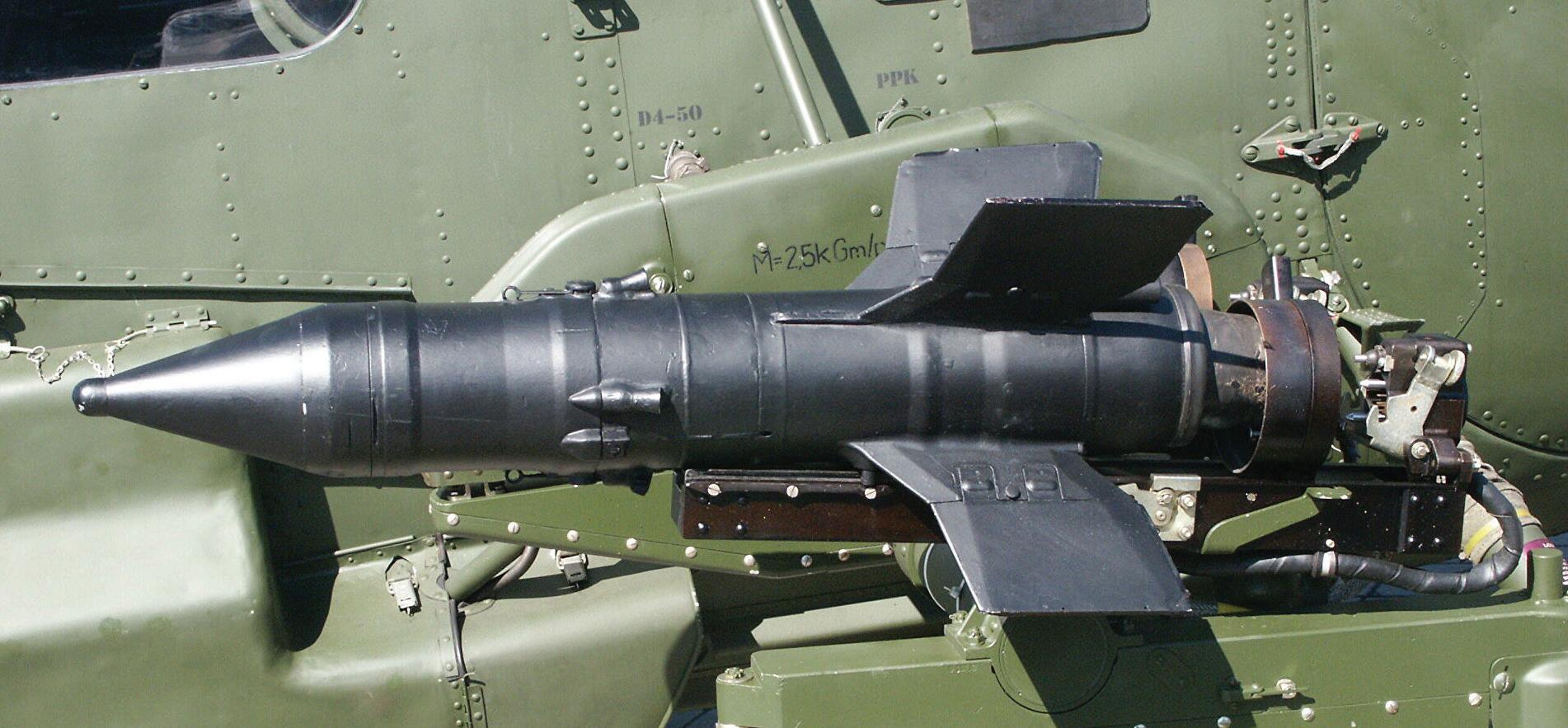
Lt Gen Amit Sharma: In this case, possibly it was overconfidence. Everybody, the entire world, thought the electronic fence that Israel has was impenetrable. The Iron Dome, they said, was the best system that we had. The Israeli army was the ultimate as far as conventional war went. And the Mossad was again the best in the world. But you cannot bank purely on machines and AI and things like this.
Humans have to make the final decision. I think humans have to take responsibility. It’s finally the man behind the gun.
Doron Avital: The man behind the gun, exactly. And the basic principles of warfare that you should never lose sight of regarding how you go about intelligence gathering. But it also has to do, I think, with the weight you give to intel signals.
I would like to refer to another famous example from Operation Market Garden during the closing stages of World War II. Gen Montgomery was planning to land two airborne divisions in Arnhem where, unknown to the allies, a German panzer division was training. The Dutch resistance could smuggle a few pictures of German panzers concealed under trees to the Allied intelligence. The head of allied intelligence disregarded this input, saying, “So you want me to discount the thousands of pictures I have for my surveillance aircraft against these 2-3 stupid pictures!” Rest is history.
Qs John Reed: Israel is good with big data, and I thought that big data was good at picking out signals from a million, especially ominous things. Shouldn’t the big data have found this?
Doron Avital: You go to data with some frame of mind and paradigm; then, you fit the data inside. Once you don’t have the right frame of mind, it’s like slipping on a banana peel in the park. You essentially don’t know what you’re looking for and don’t interpret the signal right.
There is also some political background. There has been an ongoing political upheaval in Israel for the last
year or more. The strategic direction that the country took in the end blinded us to see what was before our eyes.
In Hebrew, you say, the enemy in your eye. And you lost the enemy that was in front of you because your mind was set on some remote nuclear Iran deal, whatever, and then the upheaval in Israel.
Qs John Reed: Is this shock going to change the narrative Israelis have about themselves and their military?
Doron Avital: I think it must. You must recheck yourself, your self-image, who you are, your capabilities, who your enemy is, and who your allies are. I think we forgot who are our allies-the U.S., Europe, Egypt, Jordan and the Palestinian Authority? Bibi Netanyahu is undermining the PA all the time and promoting, in some sense, Hamas as an enemy that he uses as an excuse for not making any progress with the Palestinians.
Qs John Reed: Netanyahu has promised to conduct a commission of enquiry when it’s all over. He’s expressed no remorse; he’s accepted no responsibility for anything that happened. But do you think Israel can do it, or he can lead an effective commission of inquiry where you get to the bottom of everything that went wrong and pinpoint responsibility?
Doron Avital: The commission of inquiry would be independent. The question is whether the scope would allow the Commission of Inquiry to go into the responsibility of the political echelon.
But I think an event of this magnitude cannot stop at the height of the generals. This is a turning point in the life of Israel, and it would have far-reaching political consequences.
Qs John Reed: In the Indian context, Galwan is an example of very low-tech warfare, a much smaller-scale conflict, with unarmed border forces attacking each other with clubs and improvised machetes. What did you learn from this conflict? And was India good at fighting in this low-tech theatre?
47 TWO ENDS OF THE SPECTRUM
India and China have had border problems since the time of our independence. In 1996, it was decided that both armies would not use weapons or military force against each other on the Line of Actual Control. The clash occurred not between border guards but between regular forces, the Indian army and the Chinese army. Since the treaty prohibited firearms, improvised weapons were only used by both sides.
This was the first time two modern armies fought using this medieval method. It happened at night on a slope, and there were a lot of casualties. Some were killed in the scuffle. Some fell down the steep hillside into an extremely cold river. The Indians suffered about 20 killed, including the commanding officer. The Chinese figures are not known, but an American news outlet put the figure first around 100 and later 38 (as reported by the Australian website the Klaxon in 2022. Official Chinese sources, after a long silence, claimed four fatalities, including one commanding officer)
This is a one-in-a-million chance that such a thing has happened. And I don’t think such a thing can happen again because even China has realized that you can’t get to fisticuff as armies at this level. As per the information on the Internet, the orders for not using weapons have stayed the same because we want the situation to stay manageable beyond a point. Non-lethal weapons like electric tasers, etc., are being procured by both sides.
India and China have had problems, and the problems continue. For us, we are fighting on our borders for the territorial integrity of our own country. And in our case, victory is measured in how much you lose and how much you gain of territory.
China, we accept as far ahead in technology, in terms of numbers of the armed forces and possibly a much stronger army. But India is confident that we are strong on our borders because we are fighting in the mountains, which favour the defenders. India is not an expansionist power; we only fight for our defence. We are very confident that with what we have today and what we are getting shortly, we can defend our own frontiers.
Qs John Reed: Why do you think this, something like Galwan, couldn’t happen again or probably won’t happen again?
Lt Gen Amit Sharma: Border transgressions cannot be stopped. It’s been happening for a long time. Talks have been on. I think 20 rounds have been held. Both sides are very careful, because it’s happened once, and it doesn’t behove of two modern armies to get into a fight like the Stone Age.
Qs John Reed: How does the theme of ‘Two Ends of a Spectrum’ fit in the context of Ukraine? I covered the first two months of the war in Ukraine last year. On the one hand, it was quite high-tech, involving heavy barrag-
es of missiles from Russia, deployment of air defence by Ukraine, and a threat of use of nuclear arms by Russia, but also a lot of much lower tech stuff, especially on the Ukrainian side and very improvised, use of drones, use of naval commandos to go into Crimea more recently. Is this a high-tech war or a low-tech war?
Doron Avital: It’s a landscape with an aerial dimension, cyber dimension, and so many dimensions that calculating them would be a real challenge. I try to translate the old principles of war into the new dynamics of the new landscape. In the army, whatever technology is, the basic thing is the map, the topography, the field, and the need to command the field. If you don’t have this basic instinct, you won’t succeed in war; no new landscape of war will change this reality. High tech is fast becoming a double-edged sword because modern weapons like drones and ATGM have become so cheap anyone can purchase them.
Lt Gen Amit Sharma: There are two sides to the entire thing. One is the conventional side, which is ongoing, and the other is the nuclear flexing of muscles. Before the actual fighting started, a lot of high-tech stuff happened- AI, cyber warfare, EW and Information warfare. When the offensive started, we saw vast columns of tanks and armoured vehicles converging on Kyiv, ignoring the basic principles of mobile warfare. This was when the high-tech element was introduced, mainly by Ukraine in terms of drones, ATGMs, etc., which broke the momentum of the Russian onslaught.
Qs John Reed: Have these cheap drones become game changers?
Lt Gen Amit Sharma: A $400 drone was destroying a million-dollar tank; some would call it the death knell of tanks. No, it’s not the death knell of tanks. The tanks must be used as a weapons system as they have been designed to be used, with Infantry support as all arms integrated battle groups. Even when the Ukrainians switched to the counter-offensive, they also displayed the same shortcomings in handling advanced Western armoured fighting vehicles. It was now the turn of the Russians to pick them up like sitting ducks.
The nuclear dimension of the Ukraine war presents an interesting study of this theme of two ends of a spectrum. Early in the conflict, they flexed their nuclear muscles about three or four times. Firstly, they started flexing their muscles just before the war started as a signal to NATO to keep their boots off the ground in Ukraine. Later, as tensions rose, Russia moved tactical nuclear weapons into Belarus.
The bigger question that arises is that if Ukraine had nuclear weapons, which they had till 1994, would Russia have invaded at all? The answer is possibly no. We have countries like Japan and South Korea who are facing nuclear adversaries; what do they do? There has been talk in Japan of getting the Americans back with nuclear weapons on the soil. 73 per cent of South Koreans voted in favour of nuclear weapons in a poll, either their own or American ones.
48 TWO ENDS OF THE SPECTRUM
Lt Gen Amit Sharma: This needs to be viewed in the correct perspective.

AN ALLIANCE ANCHORED ON TECH


There is a strong foundation of tech ties that bind the Indo-Ukraine alliance provided they are revived and nurtured.
This article is based on Synergia’s participation in the India - Ukraine Technological Collaboration Forum on 15 March 2024. The representatives discussed technological collaboration feasibility and the challenges between the two countries.
India and Ukraine have a successful collaboration in technology and science, with diverse areas of cooperation, showcasing a strong partnership between the two nations. The Joint S&T Committee, established in May 1992, meets annually to discuss projects. There is a need to give impetus to the existing collaborations.
The technology collaboration between India and Ukraine spans across various sectors, leveraging the strengths of both nations to drive mutual advancements. India’s robust space program and IT hub status complement Ukraine’s rich heritage in space exploration and skilled IT professionals, opening doors to significant opportunities in aerospace, artificial intelligence, and software development.
In telecommunications, India’s growing sector synergizes with Ukraine’s expertise in satellite communications and cybersecurity, enhancing infrastructure and digital security.
Defense technology also sees potential joint ventures in weapon systems development and technology transfers, bolstering military capabilities.
India -Ukraine tech alliance has to reach out beyond the traditional military domain into a much varied mix of Space, IT, Agri and Bio Tech. There is a great potential in sustaining mutual growth in these fields.
Space Sector: National Space Agency of Ukraine and ISRO have ongoing cooperation in the space sector.
This includes joint satellite launches using Indian rockets and Ukrainian satellites, as well as scientific cooperation on space research projects.
Information Tech: India’s IT industry has partnered with Ukrainian IT firms on various projects includes joint software development and IT services outsourcing.
Aptech Limited from Mumbai signing agreements with the International Institute of Personnel Management, Ukraine.
Defence Tech: India and Ukraine have a strong relationship in defense cooperation includes joint development and production of defense equipment, as well as collaboration on R&D projects.
Agricultural Tech: With both countries being major agricultural producers, India and Ukraine have partnered on agricultural technology initiatives. This includes collaboration on developing new crop variet-
ANALYSIS
ies, improving irrigation techniques, and sharing knowledge on agricultural machinery.
Bio-Tech Sector: Both countries are cooperating in the biotechnology sector, with companies like Biocon and Genome engaging in joint efforts.
TECH COLLABORATION:
The burgeoning opportunities for enhancing technological collaboration between India and Ukraine span various cutting-edge sectors, promising mutual benefits and advancements.
In the realm of space technology, India’s robust space program dovetails with Ukraine’s rich her itage in space exploration, aerospace engi neering, advanced rocket technology, and space material science. This synergy paves the way for significant advance ments in space exploration and technol ogy.
The field of artificial intelli gence (AI) also presents fertile ground for collaboration. With India’s status as a major IT hub and Ukraine’s sizable pool of skilled IT professionals, both nations stand to gain from joint ventures in AI applications.
This partnership could lead to breakthroughs in tech solutions, joint software development, machine learning, and natural language processing, further cementing their positions in the global IT landscape.
energy collaboration aligns India’s diversification goals with Ukraine’s solar and wind expertise, promoting sustainable energy solutions. In biotechnology, the partnership aims at breakthroughs in vaccine and drug development, capitalizing on India’s pharmaceutical industry and Ukraine’s genetic engineering skills.
Biotechnology is yet another field ripe for partnership. India’s strong pharmaceutical industry, combined with Ukraine’s expertise in genetic engineering, can lead to significant advancements in vaccine development, drug development, and pharmaceutical R&D.
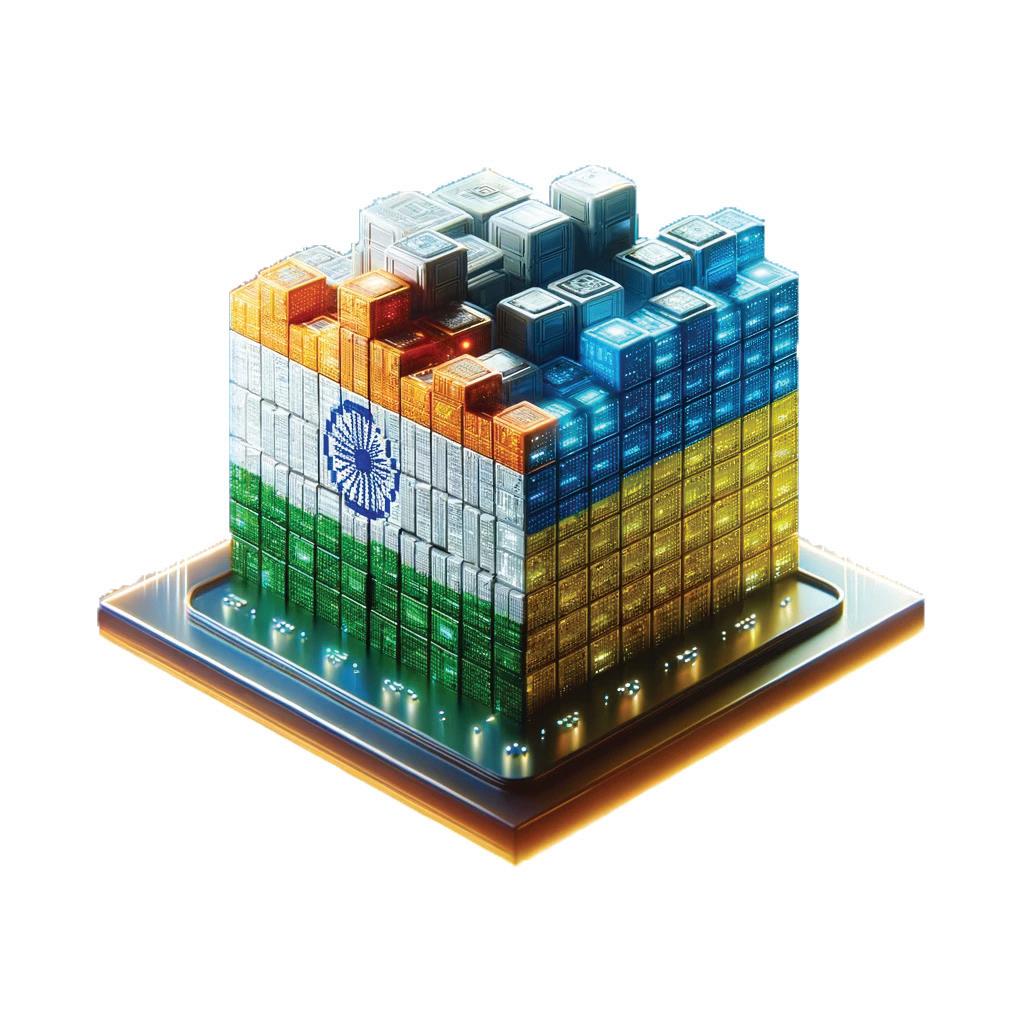
Nanotechnology, where both countries have ongoing research programs, presents opportunities for joint efforts in developing nanomaterials for applications in electronics, medicine, and energy. This collaboration can drive innovation and application of nanotechnology in critical sectors. Nanotechnology and agricultural technology collaborations focus on developing innovative materials and improving agricultural practices, respectively. Education and training partnerships further aim to cultivate a workforce skilled in emerging technologies, fostering long-term innovation and growth in the collaborative efforts between India and
Telecommunications is another sector where collaborative efforts could yield substantial dividends. India’s expansive telecom sector, complemented by Ukraine’s expertise in satellite communication technologies, next-generation telecom infrastructure, and cybersecurity solutions, can enhance both nations’ telecommunications capabilities. Particularly, Ukraine’s experience in defending critical infrastructure against cyber threats can bolster India’s growing digital economy.
In the defense technology arena, the well-established defense sectors of both countries can engage in joint ventures focusing on the co-development of weapon systems, technology transfer in intelligence, surveillance, reconnaissance (ISR), military aircraft engines, spares, and submarine engine technology. Such collaborations can enhance their defense capabilities and foster technological innovation.
The renewable energy sector offers another avenue for collaboration, with India’s ambition to diversify its energy mix and Ukraine’s expertise in solar and wind power generation.
Joint endeavors in renewable energy technologies, manufacturing facilities, and supplying turbines can contribute to sustainable energy solutions.Renewable
Agricultural technology collaboration can address significant challenges such as crop yield improvement, soil management, sustainable farming practices, and irrigation technology, leveraging India’s position as a major agricultural producer and Ukraine’s expertise in precision agriculture techniques.
Finally, collaboration in education and training can build a future workforce skilled in emerging technologies, through student exchange programs, joint research projects, and faculty development initiatives. The organisation of joint workshops, seminars and conferences to share knowledge and discuss technological advancements , are new areas of explorations. This educational collaboration can lay the foundation for sustained technological innovation and partnership between the two nations.
AN ACTION PLAN
Both countries must prioritise specific opportunities for Tech collaborations. This should commence with formation of Working groups to jointly examine each proposal. This could be follwed by comprehensive bilateral agreements to to implement proposals in a time bound manner.
By leveraging the complementary strengths, India and Ukraine can become leaders in technological innovation on the global stage.
50 AN ALLIANCE ANCHORED ON TECH

INSIGHTS is a strategic affairs, foreign policy, science and technology magazine that provides nonpartisan analysis of contemporary issues based on real-time information.
To subscribe,
sambratha@synergiagroup.in ; +91 80 4197 1000

https://www.synergiafoundation.org

ROUND TABLE WITH RASHTRIYA RAKSHA UNIVERSITY
UPCOMING FORUMS:
ROUND TABLE WITH RASANAH INSTITUTE OF IRANIAN STUDIES
SYNERGIA TECHNOLOGY SEMINAR, NEW DELHI

SYNERGIA
Just like us.
Be Resilient
MARCH 2024 | MONTHLY EDITION





































































































